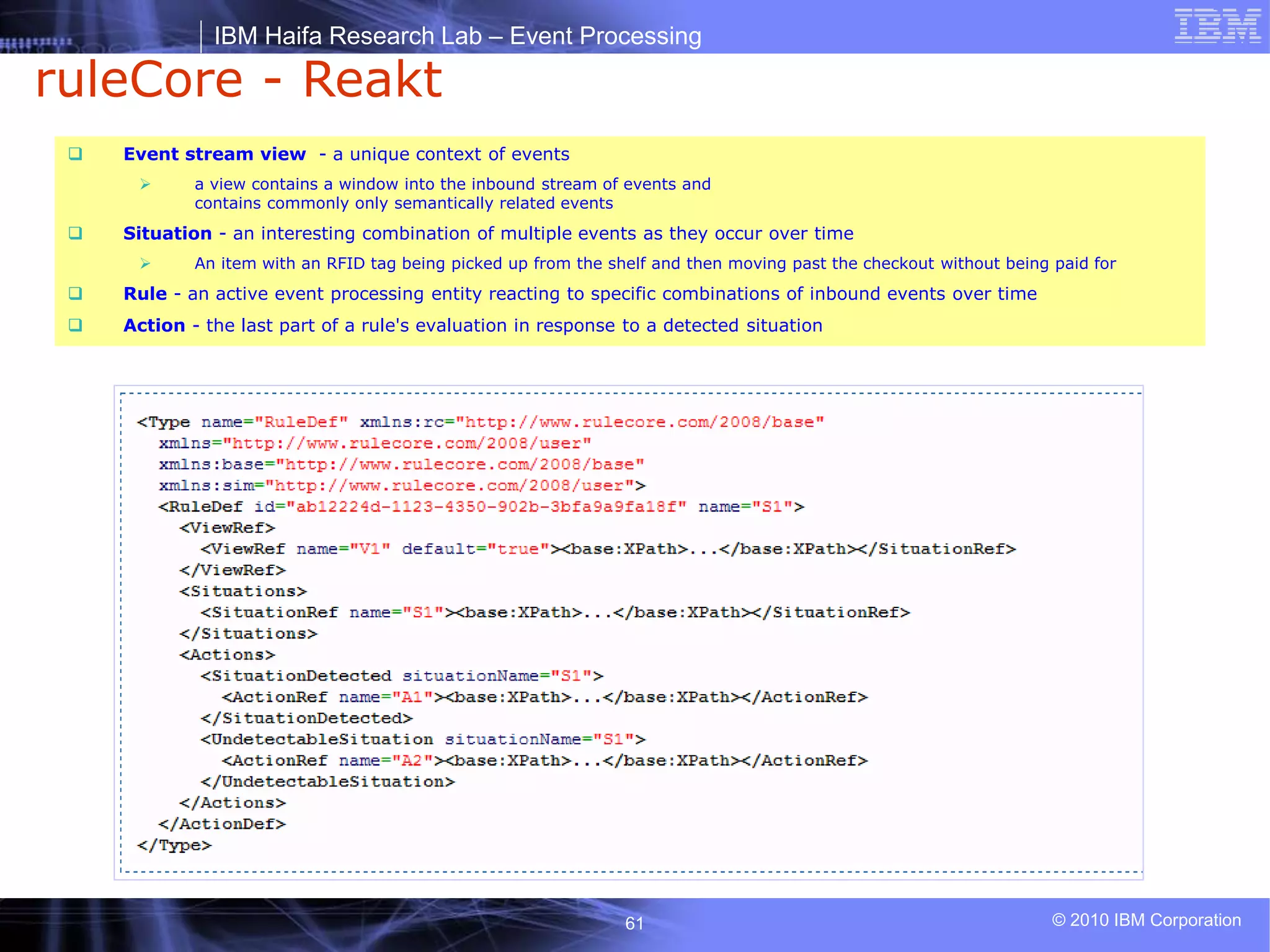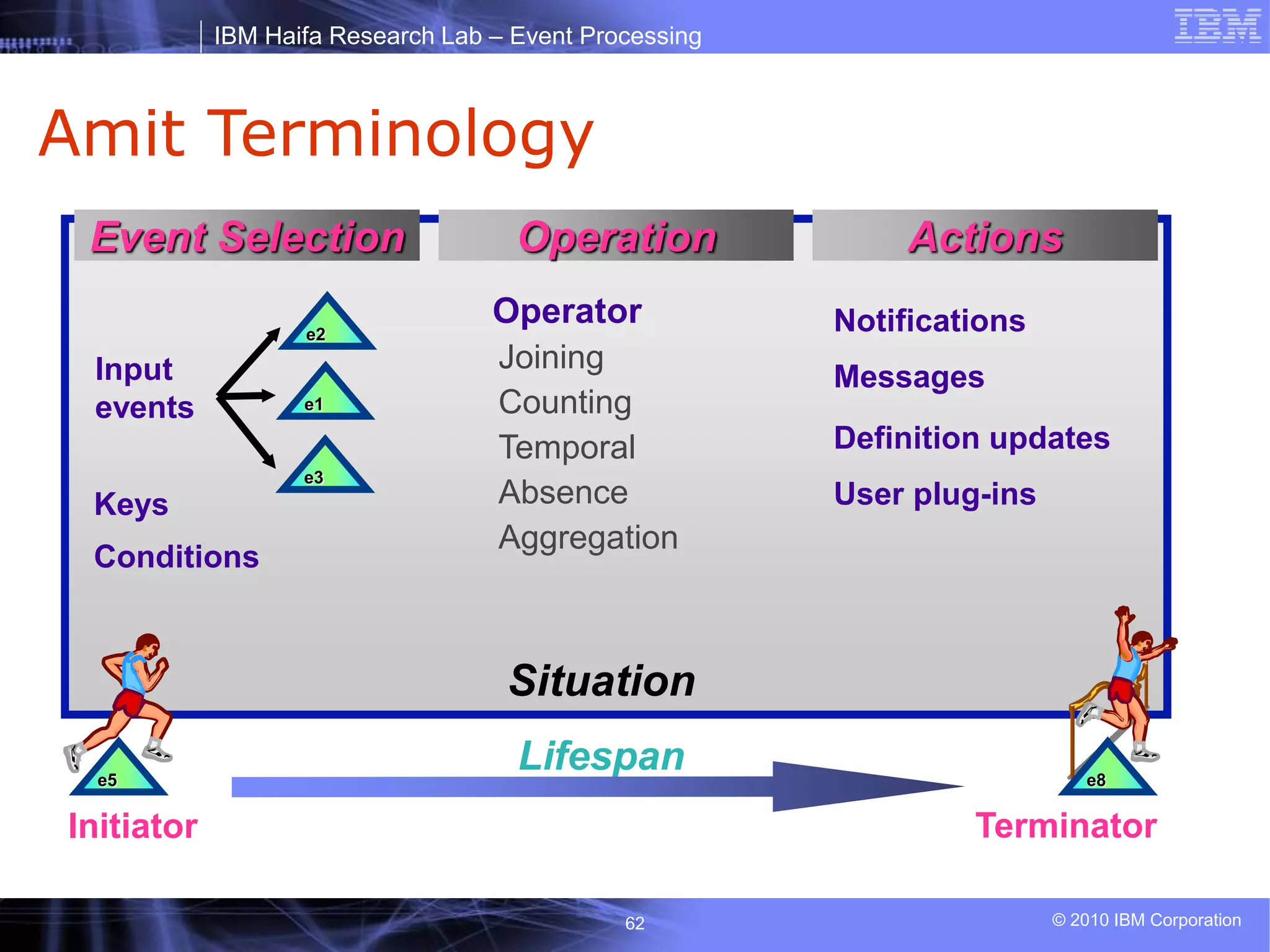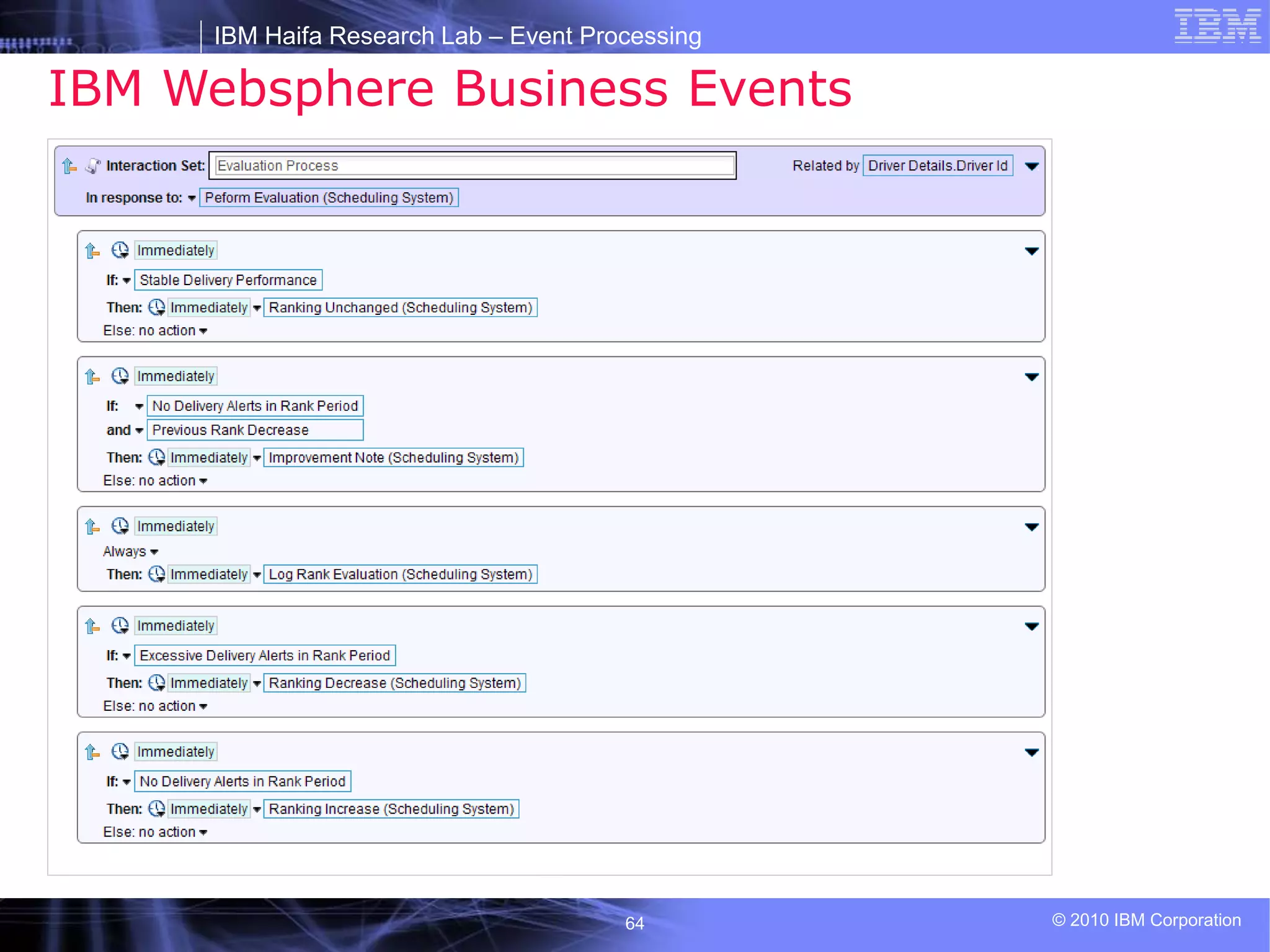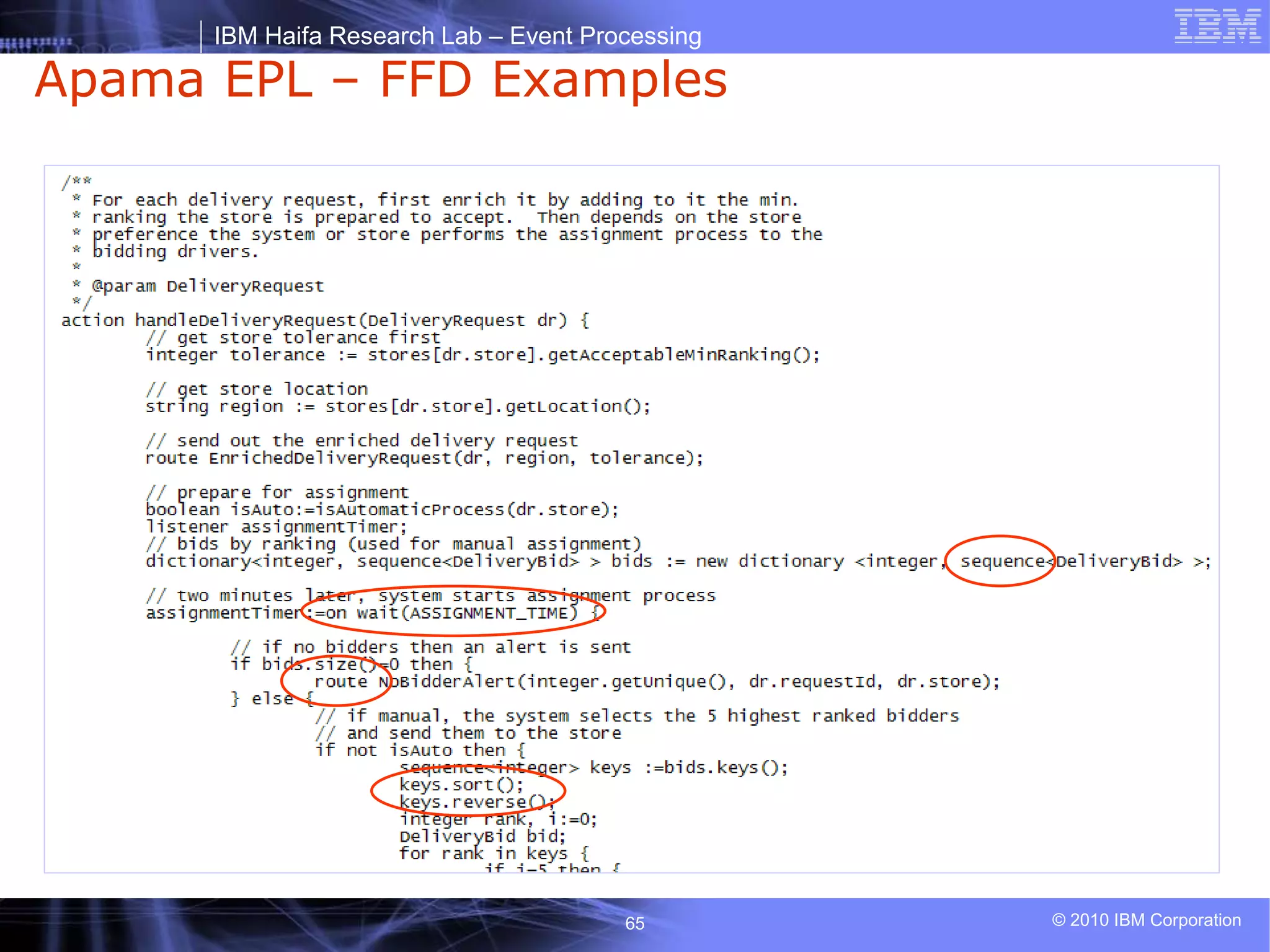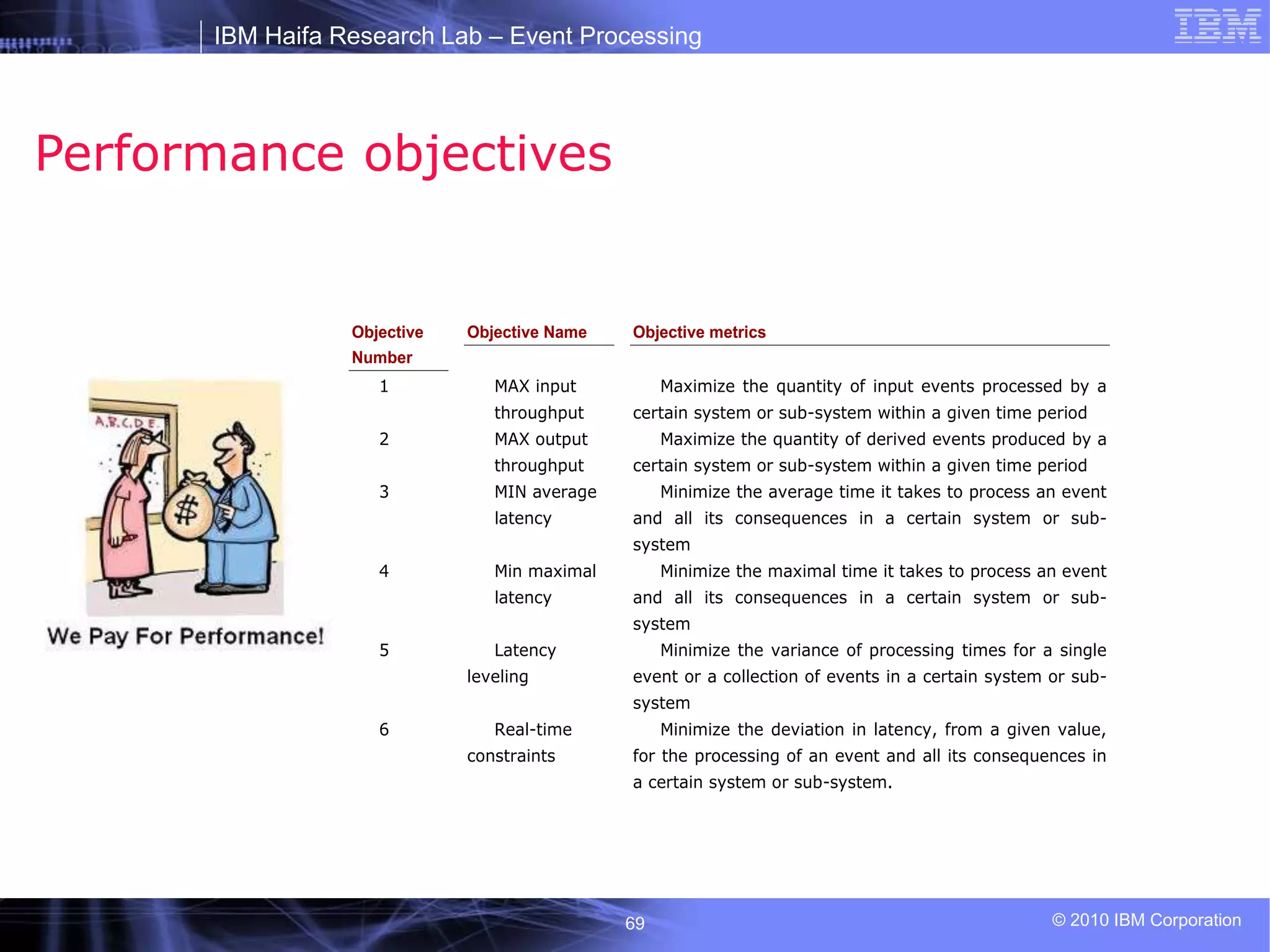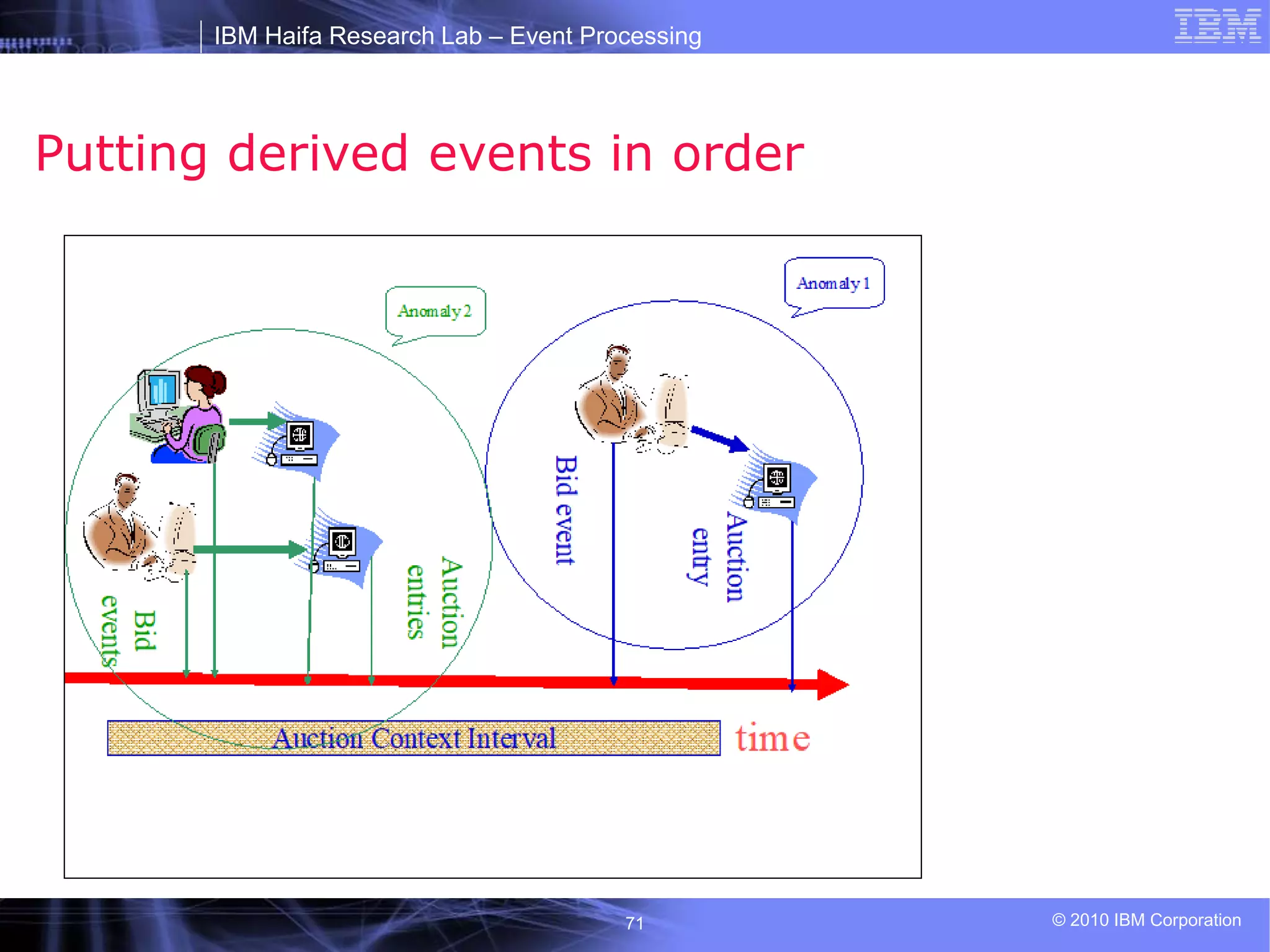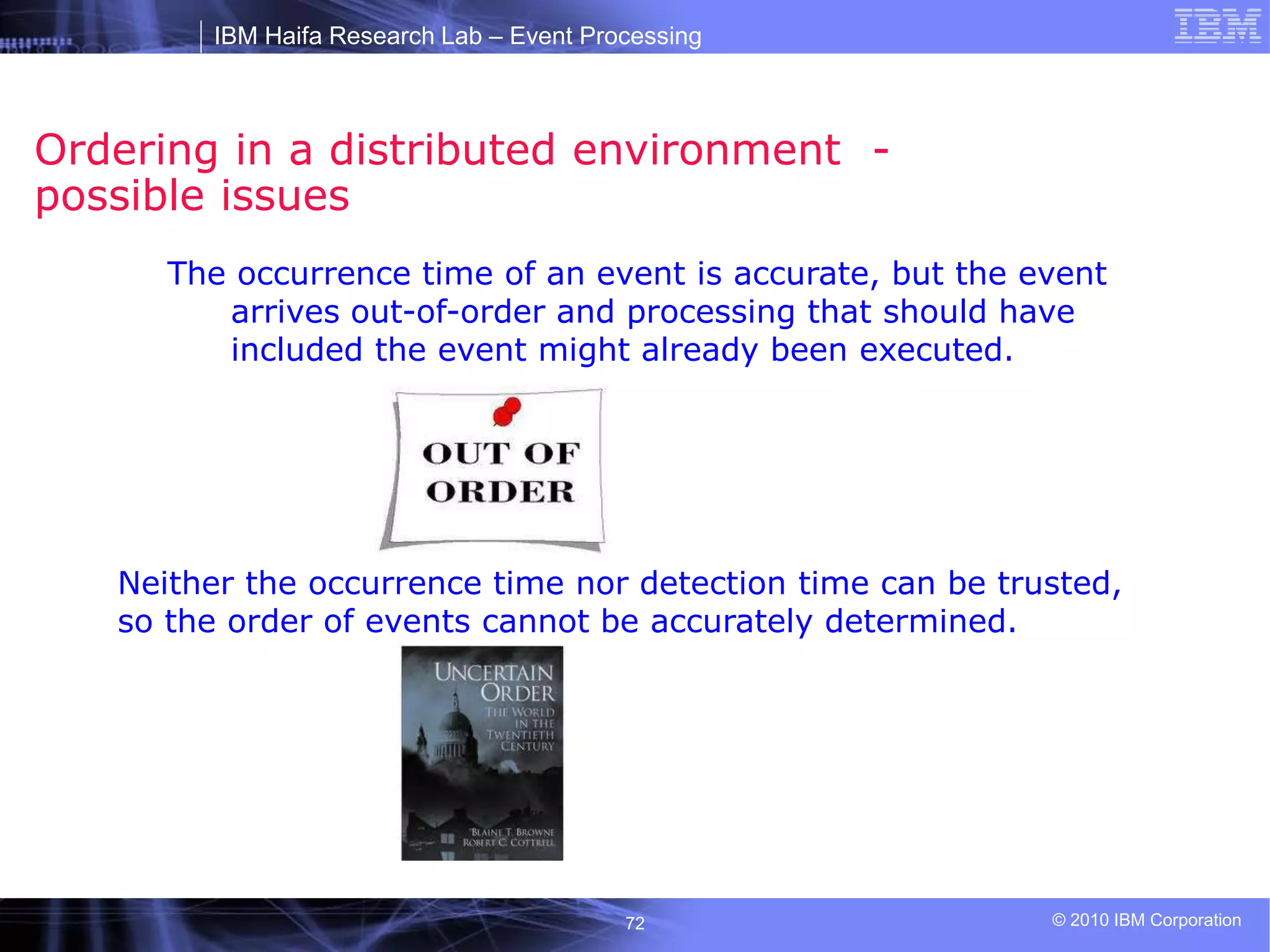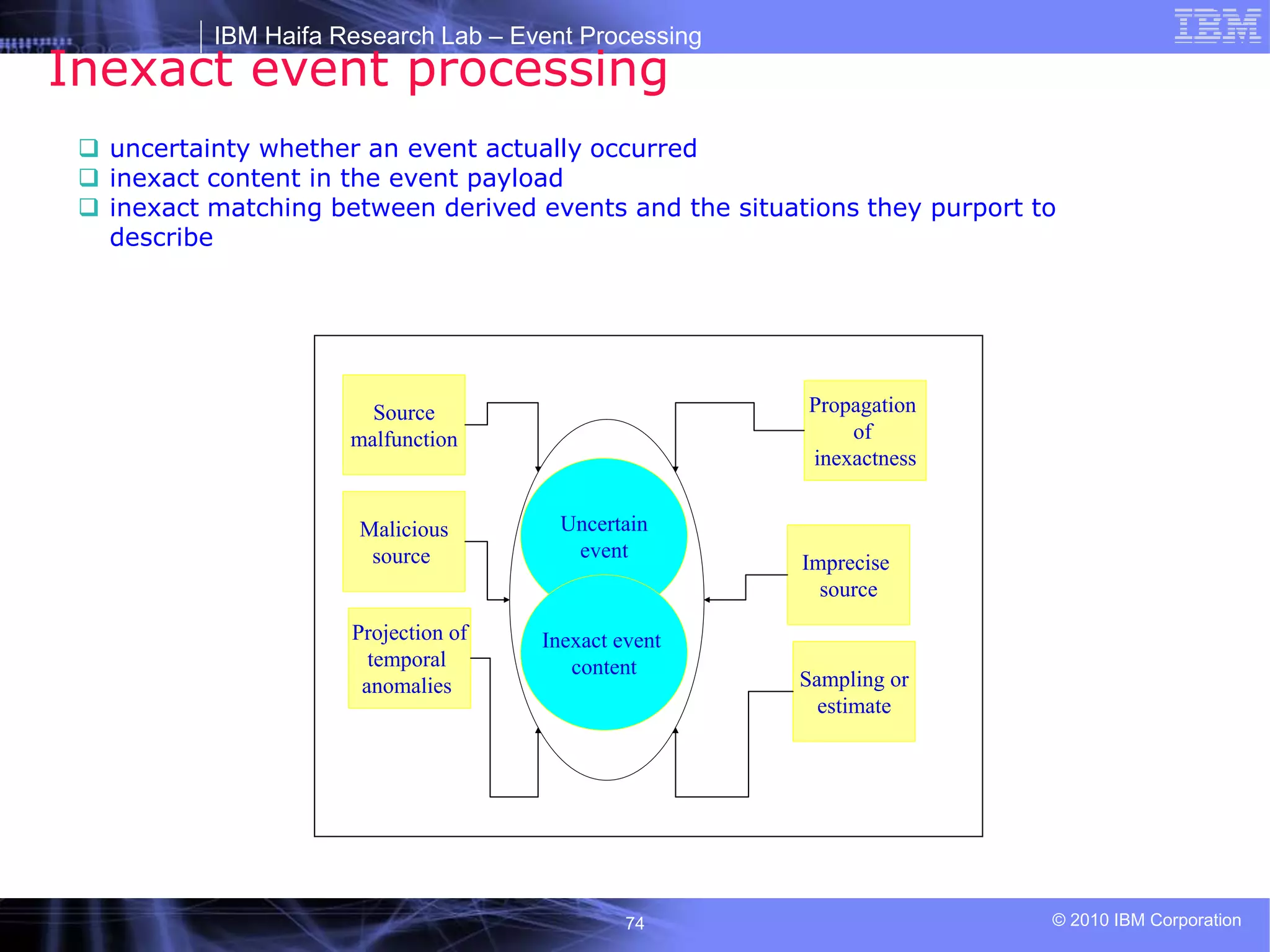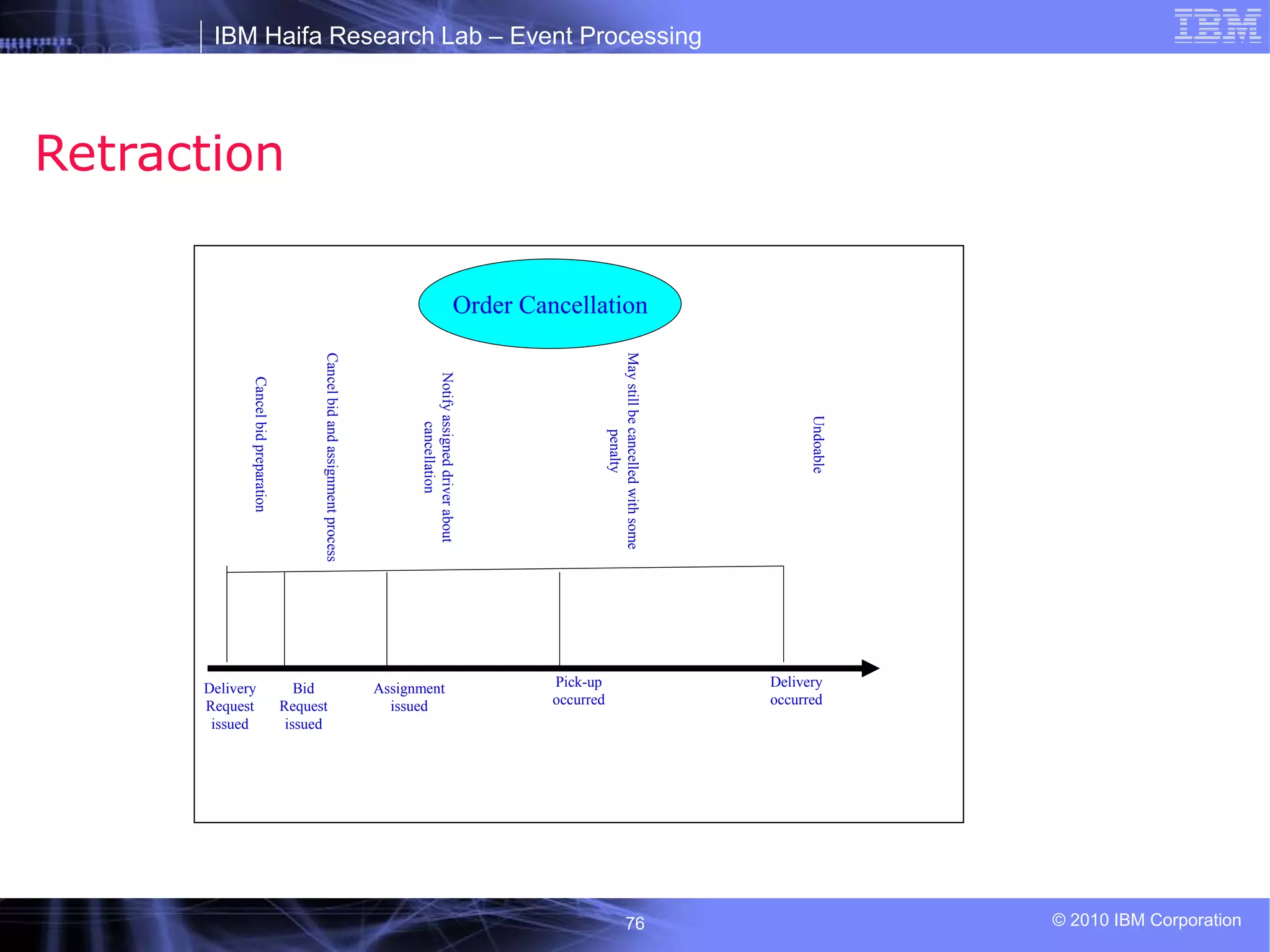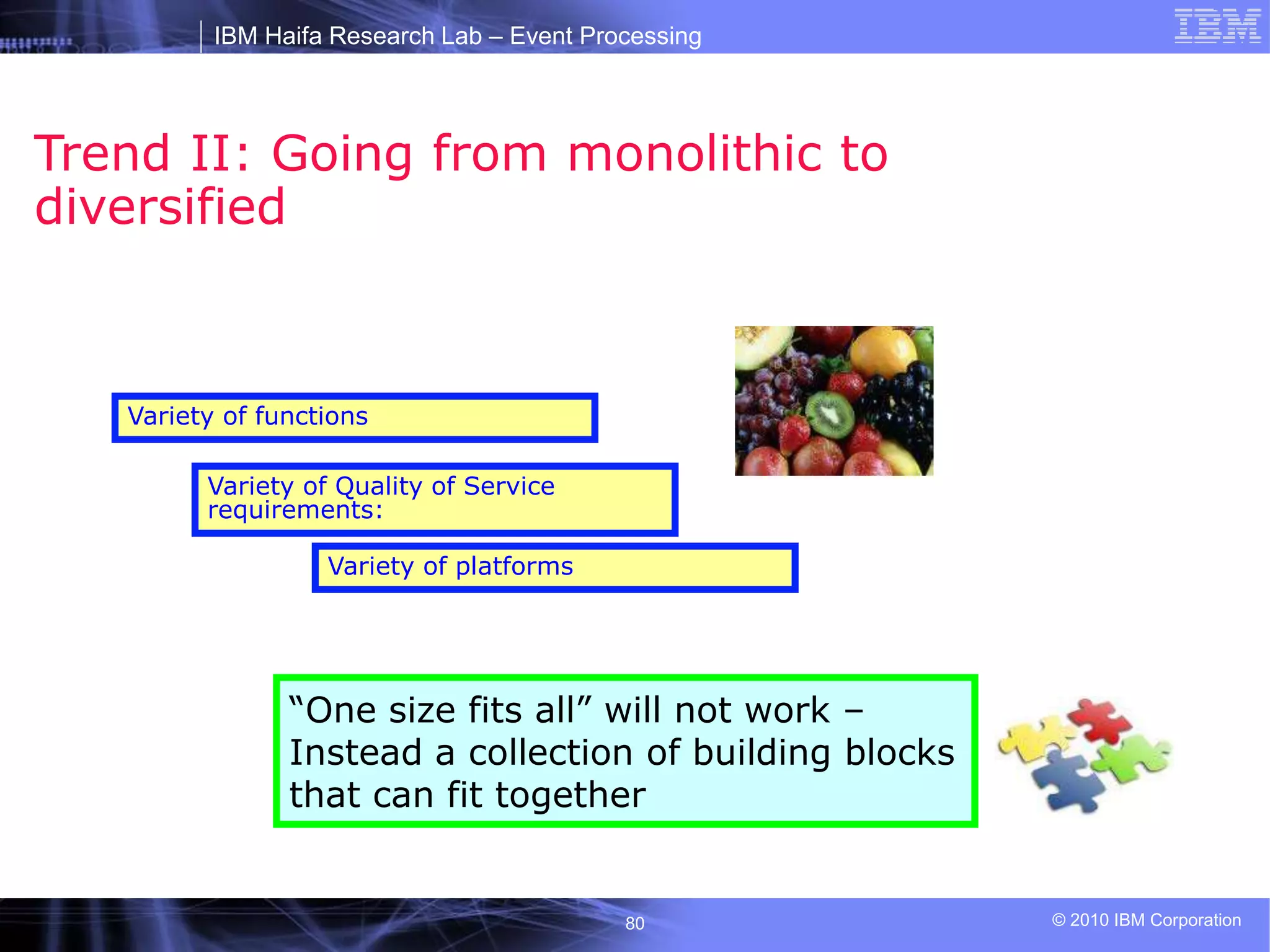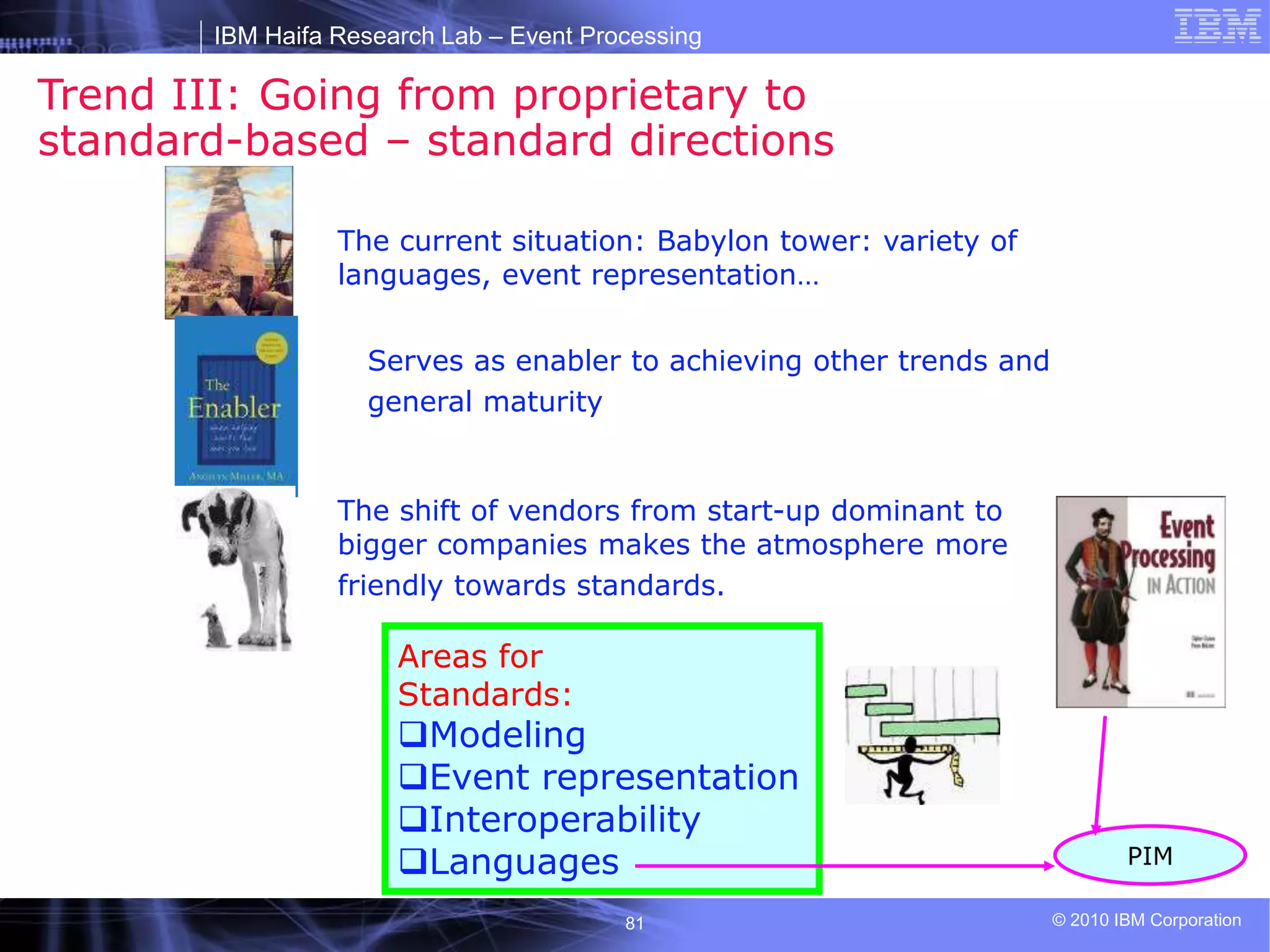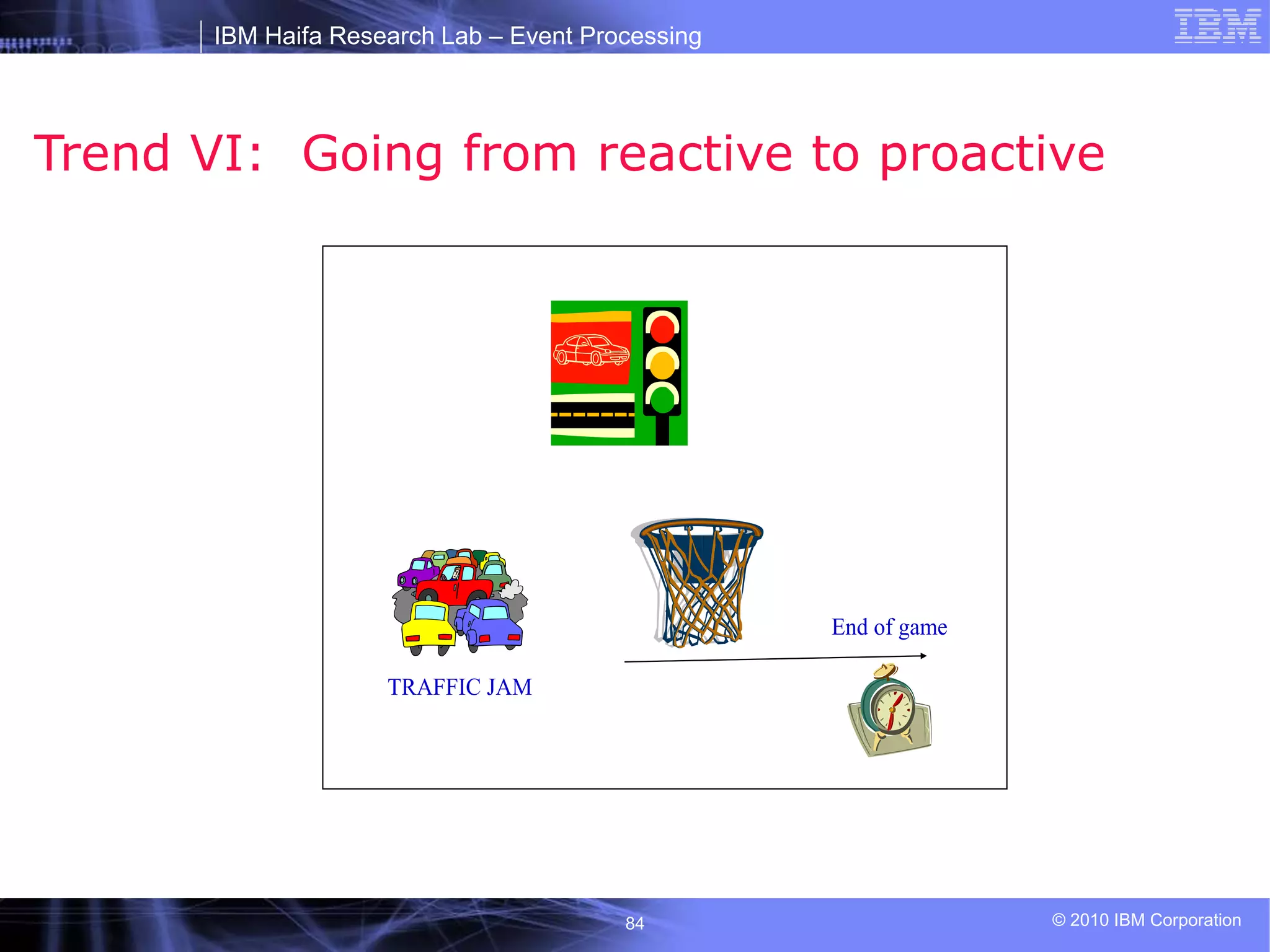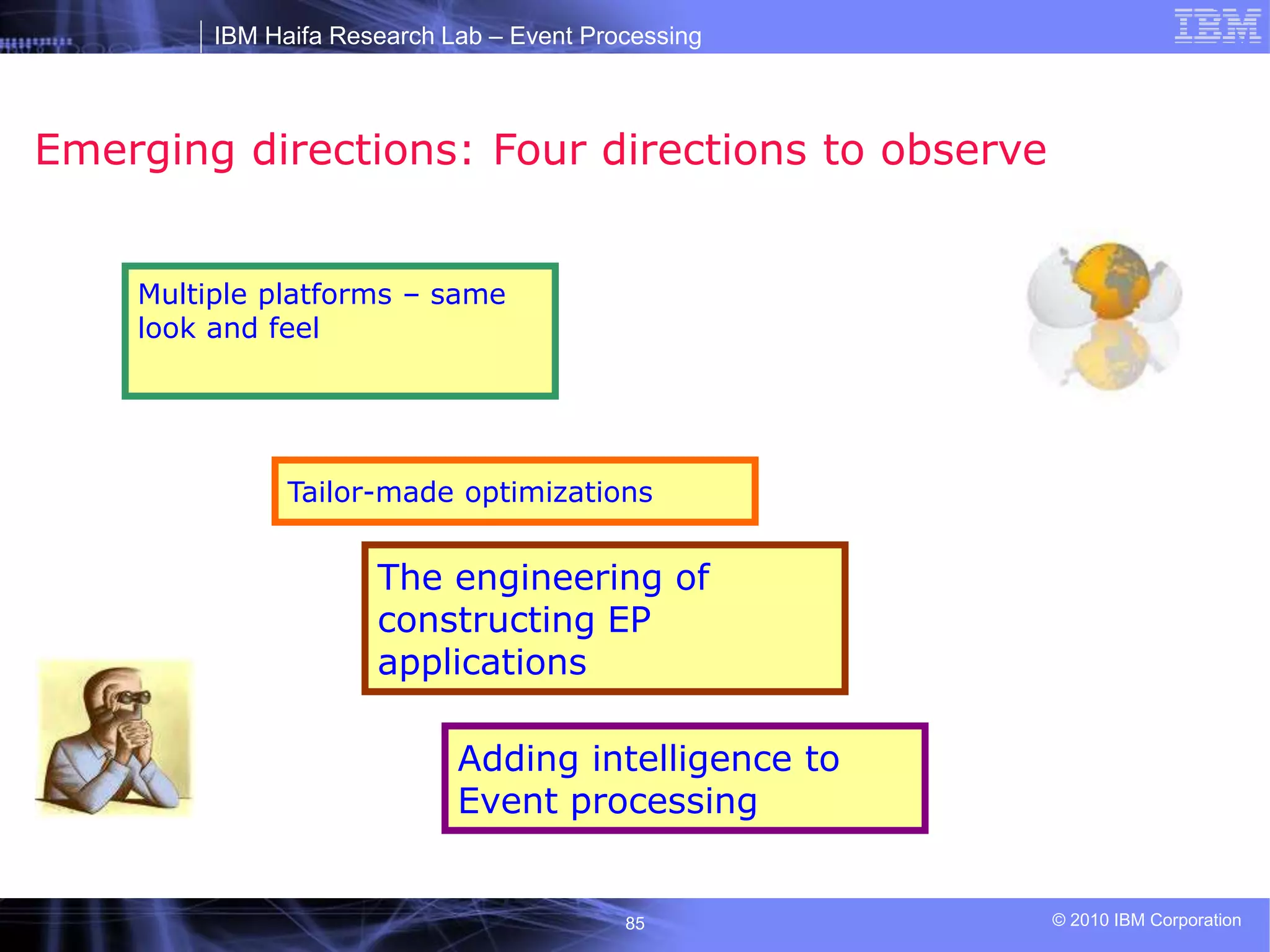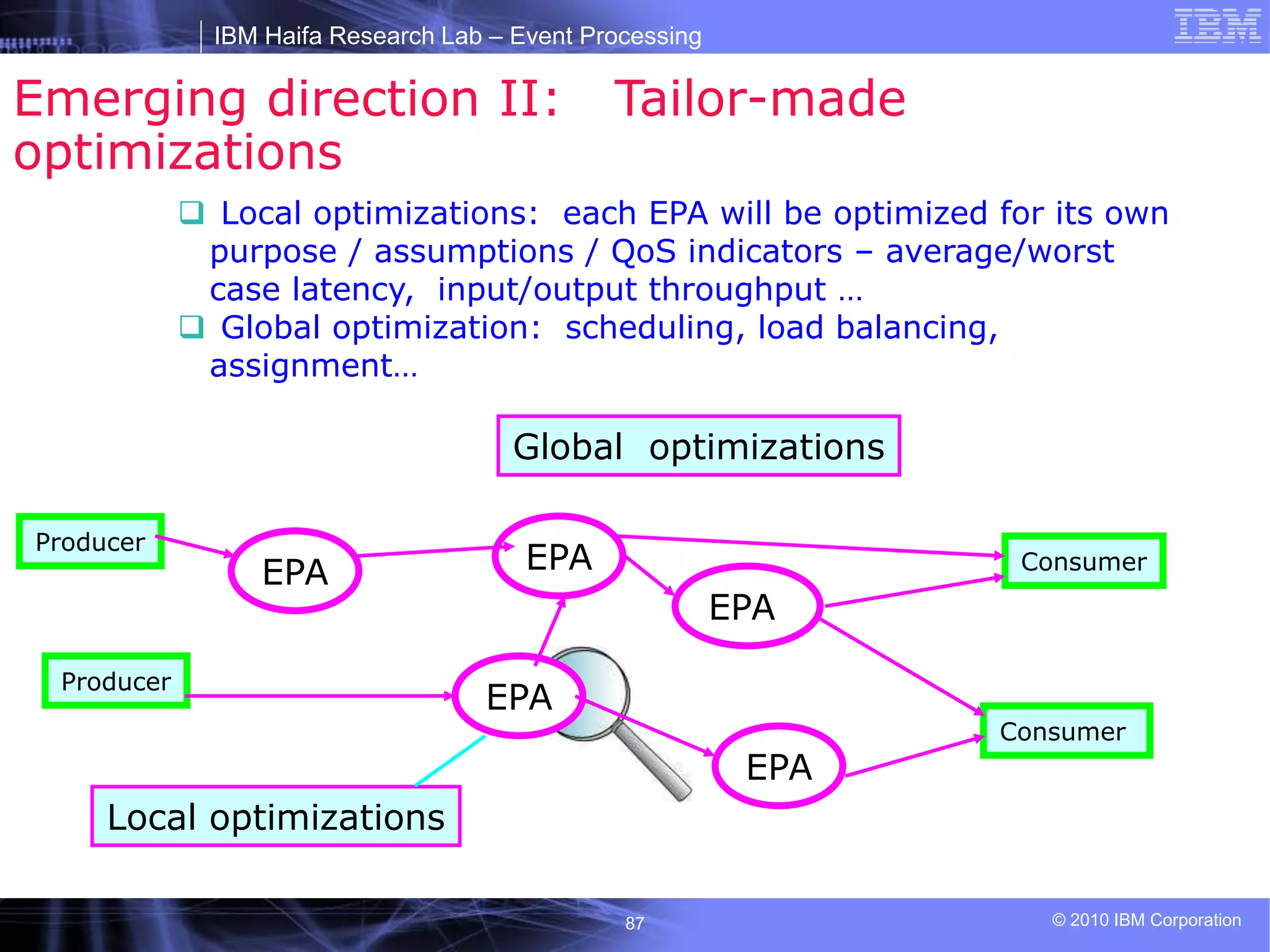This document provides an overview of event processing, including:
1) Event processing involves performing operations on events and has roots in areas like active databases, data stream management systems, and network management.
2) Key concepts in event processing include events, event types, event producers, event consumers, and detecting patterns in events. Common applications are in system monitoring, complex event processing, and event-driven architectures.
3) Event processing has standard building blocks like event processing agents, event channels, and event processing networks that connect producers and consumers of events. Common operations include filtering, transforming, correlating, and detecting patterns in streams of events.
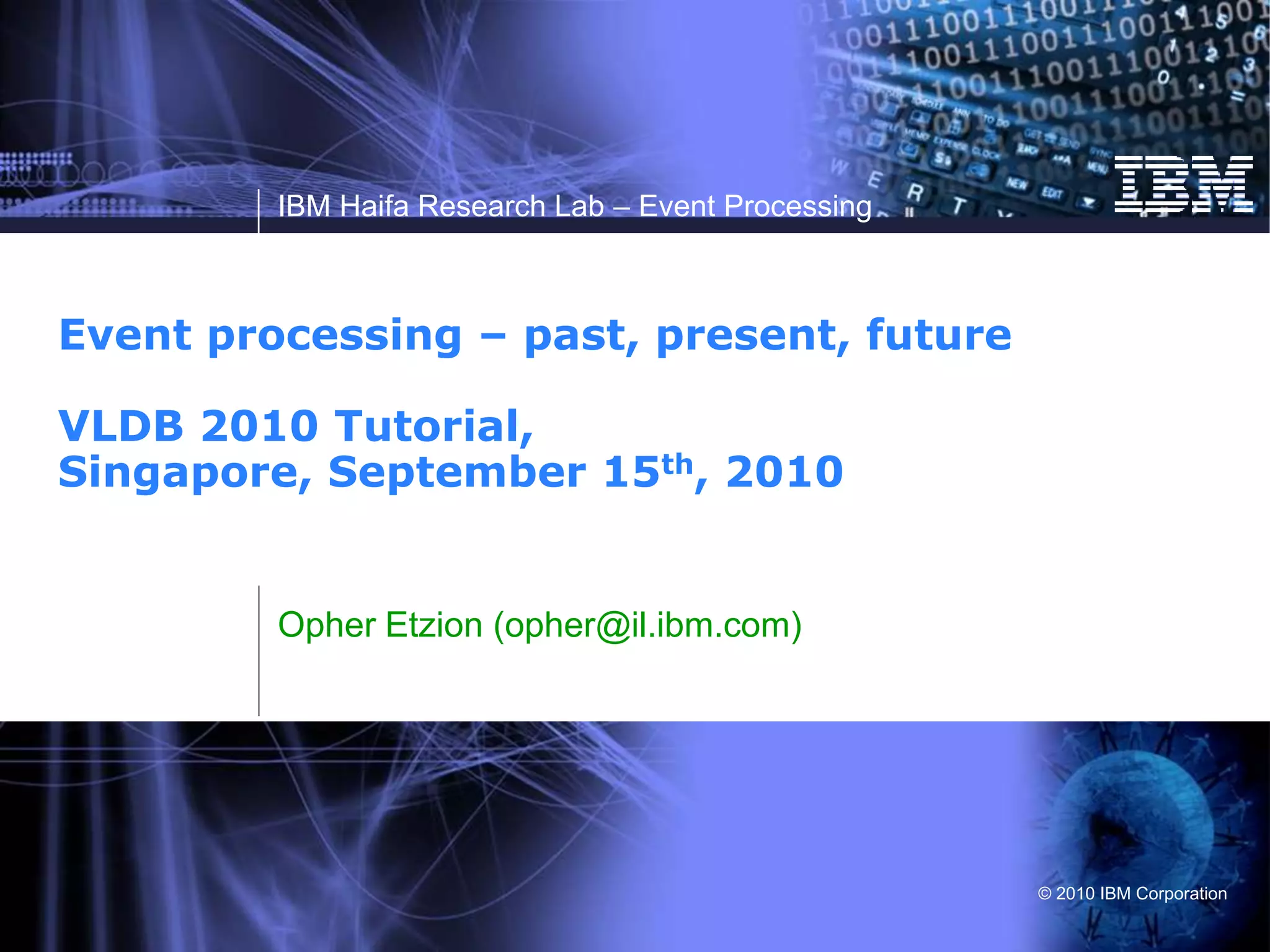
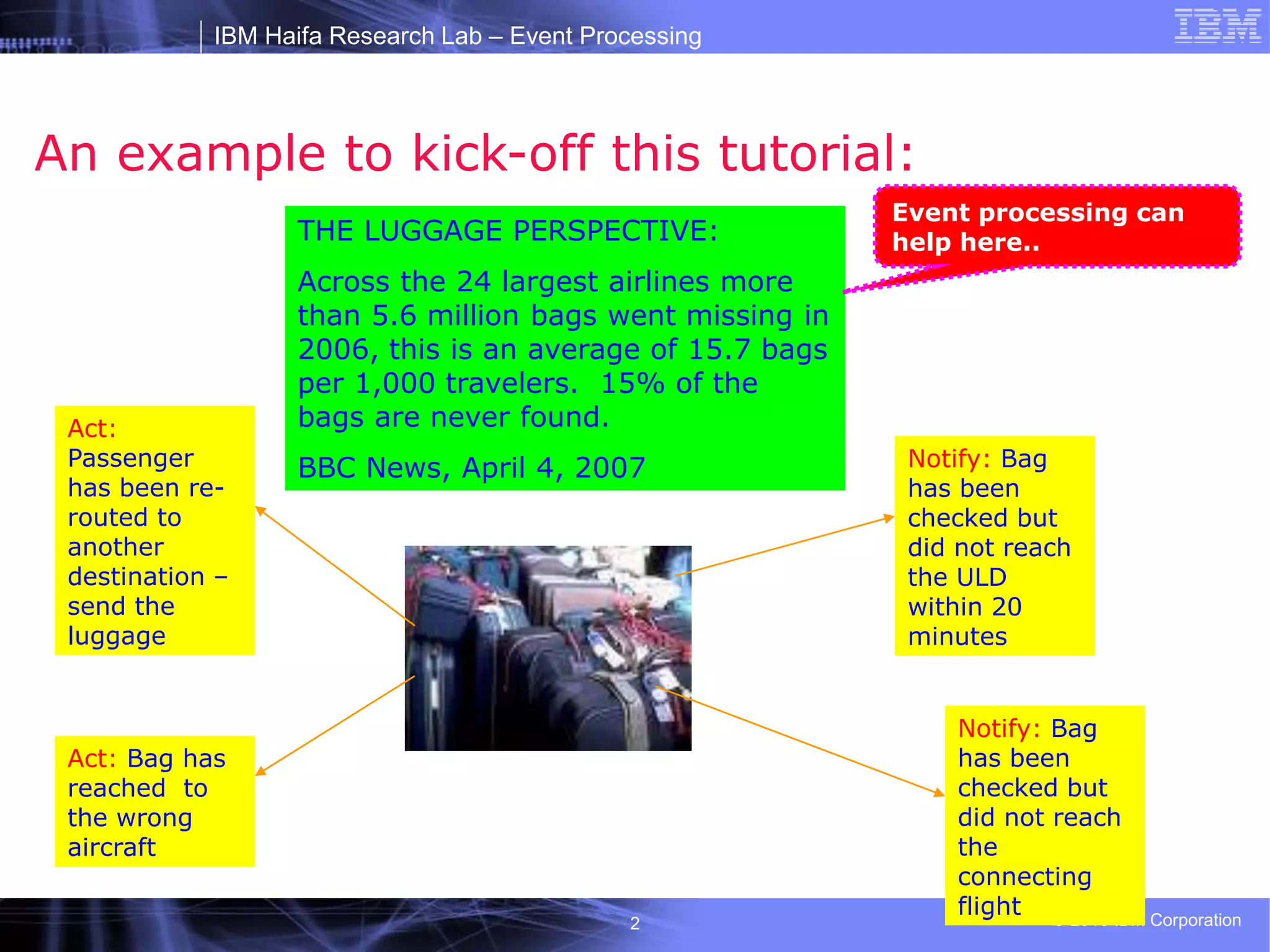
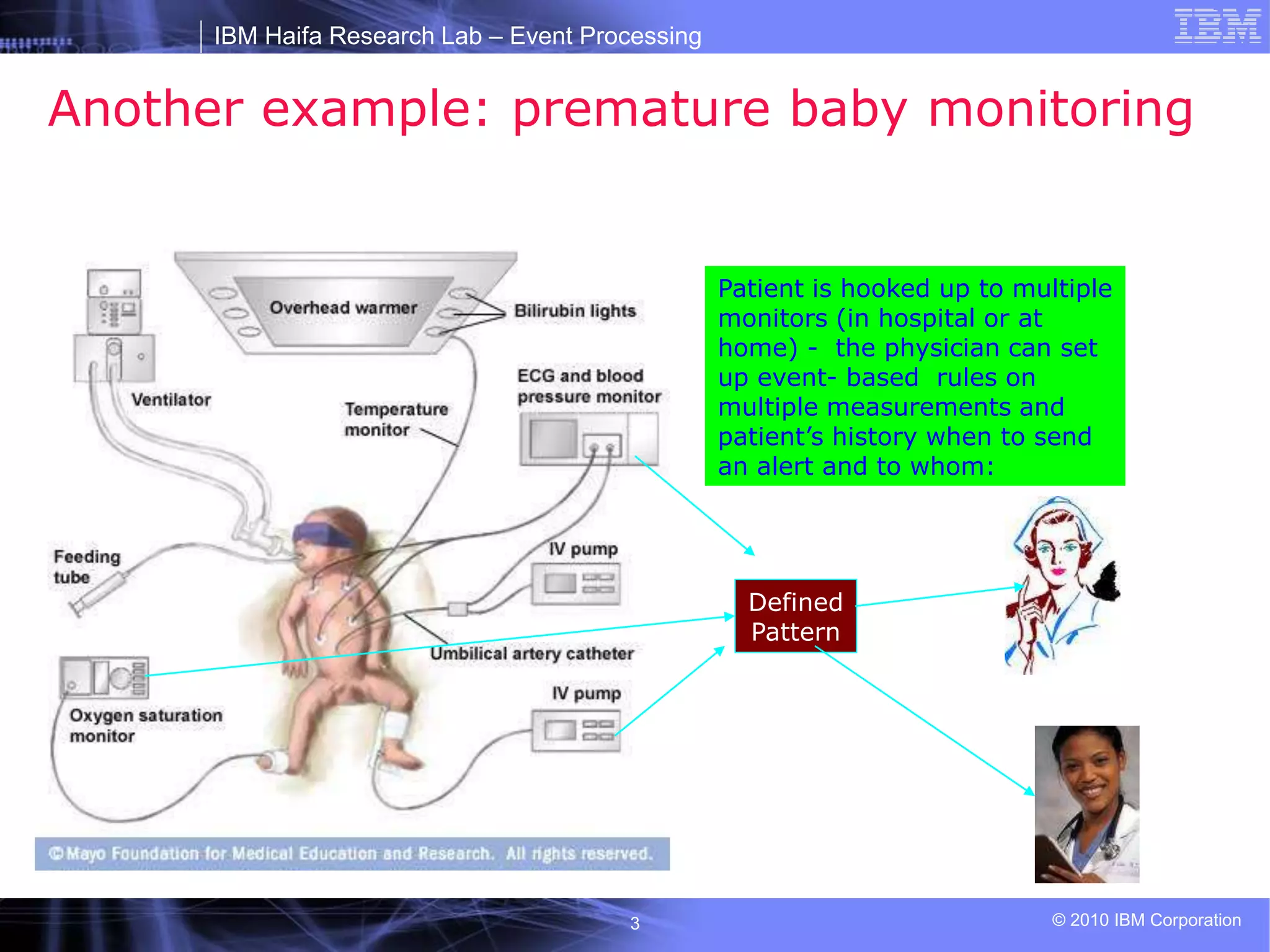

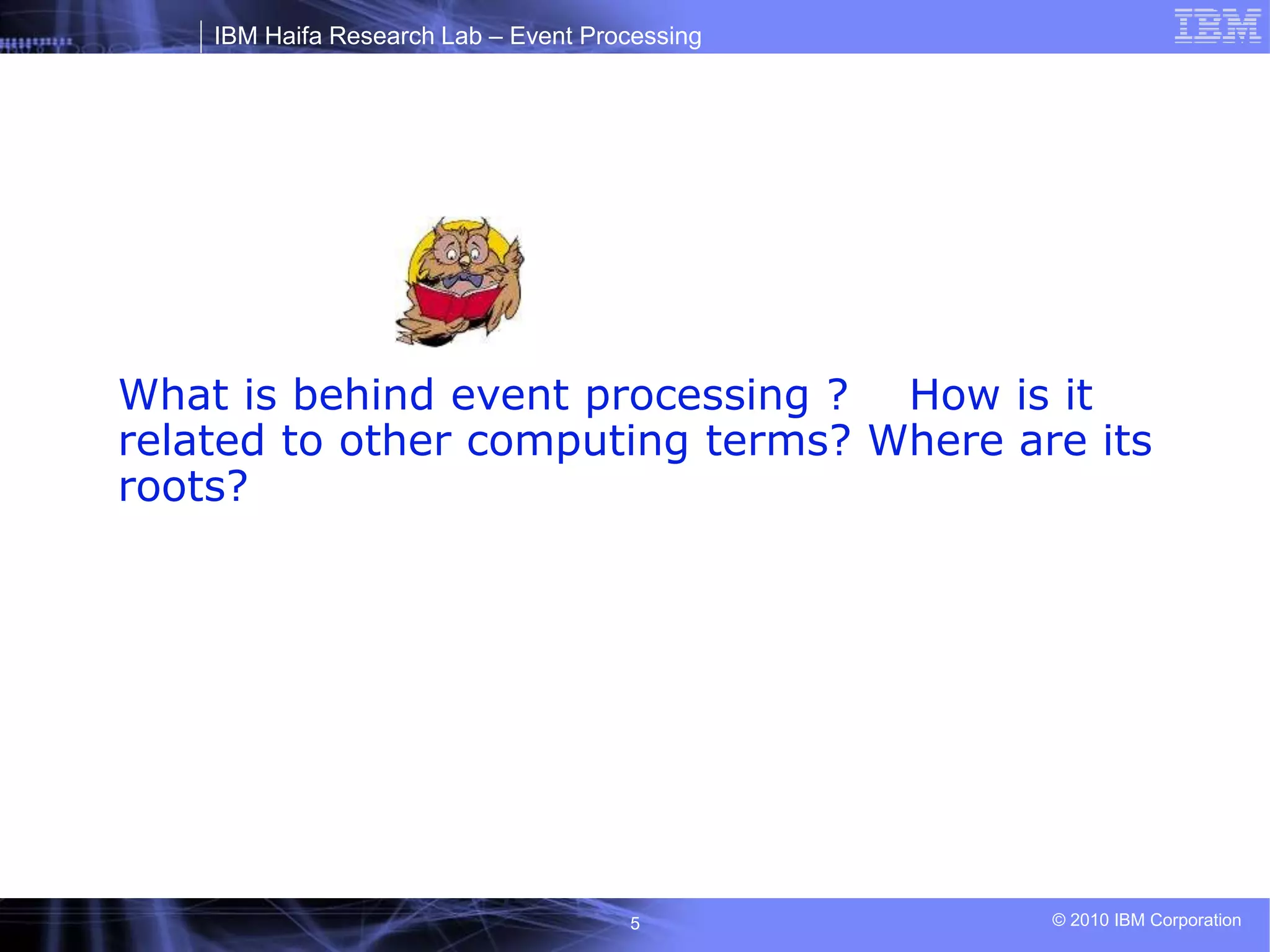
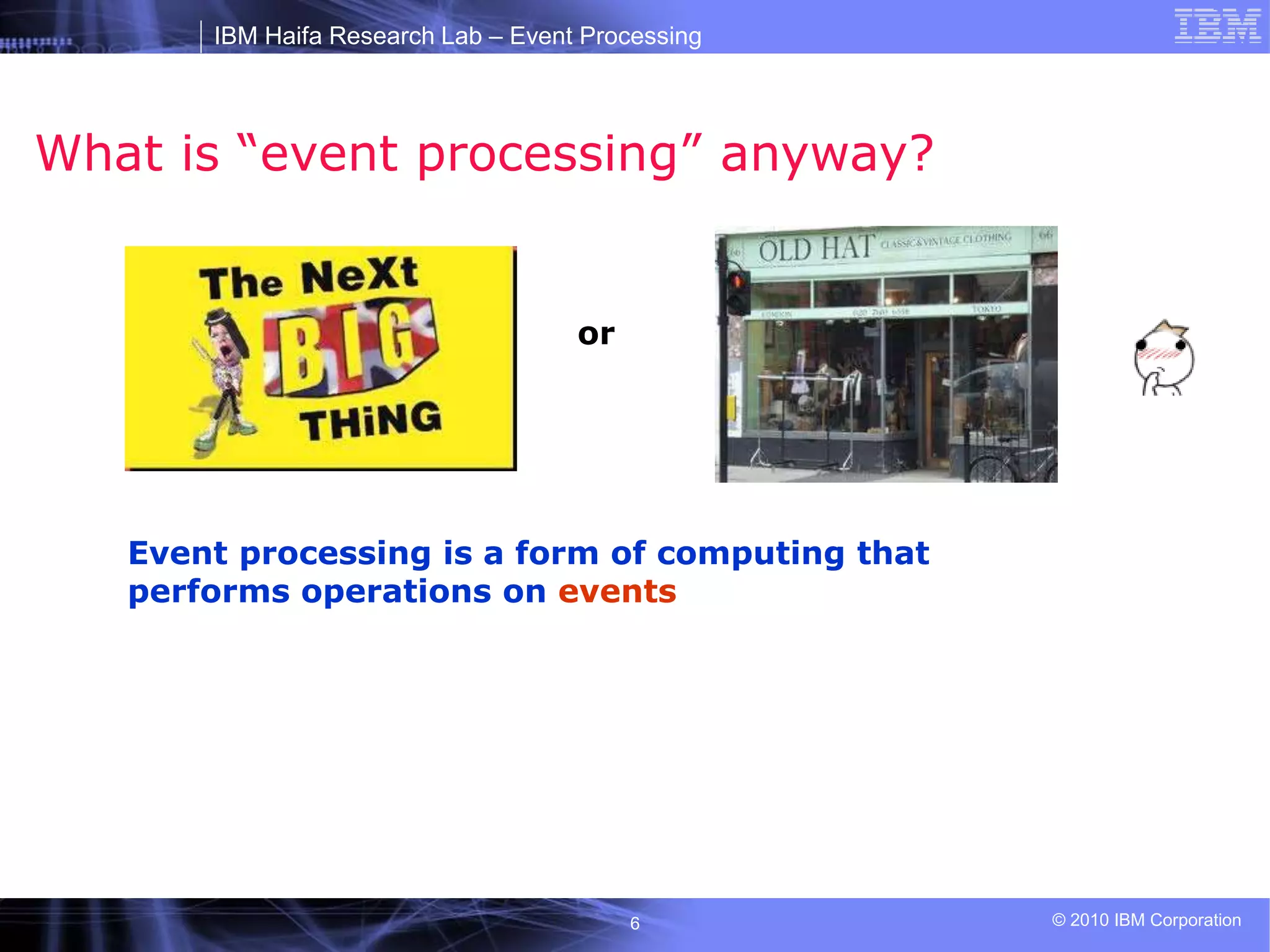
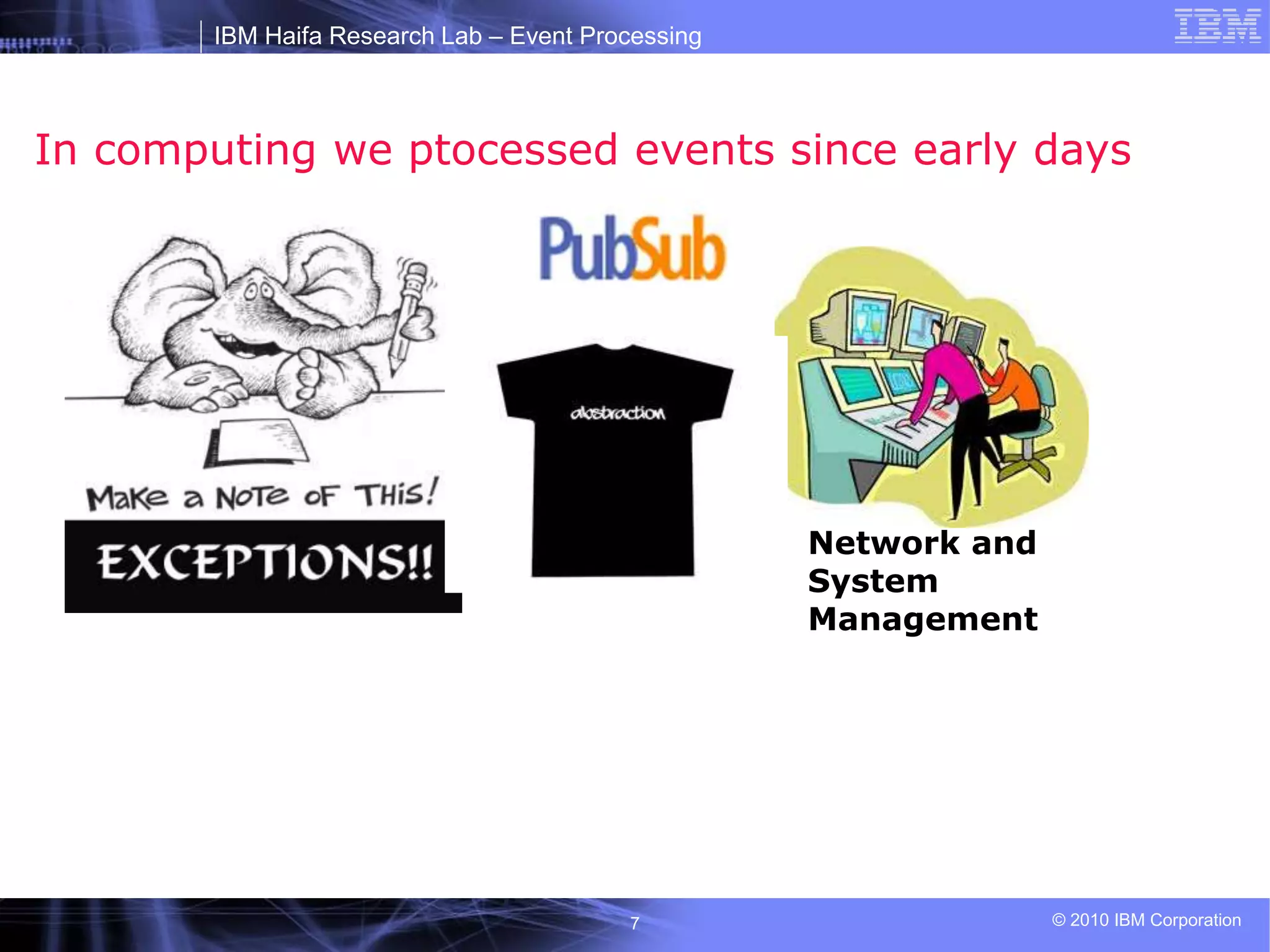
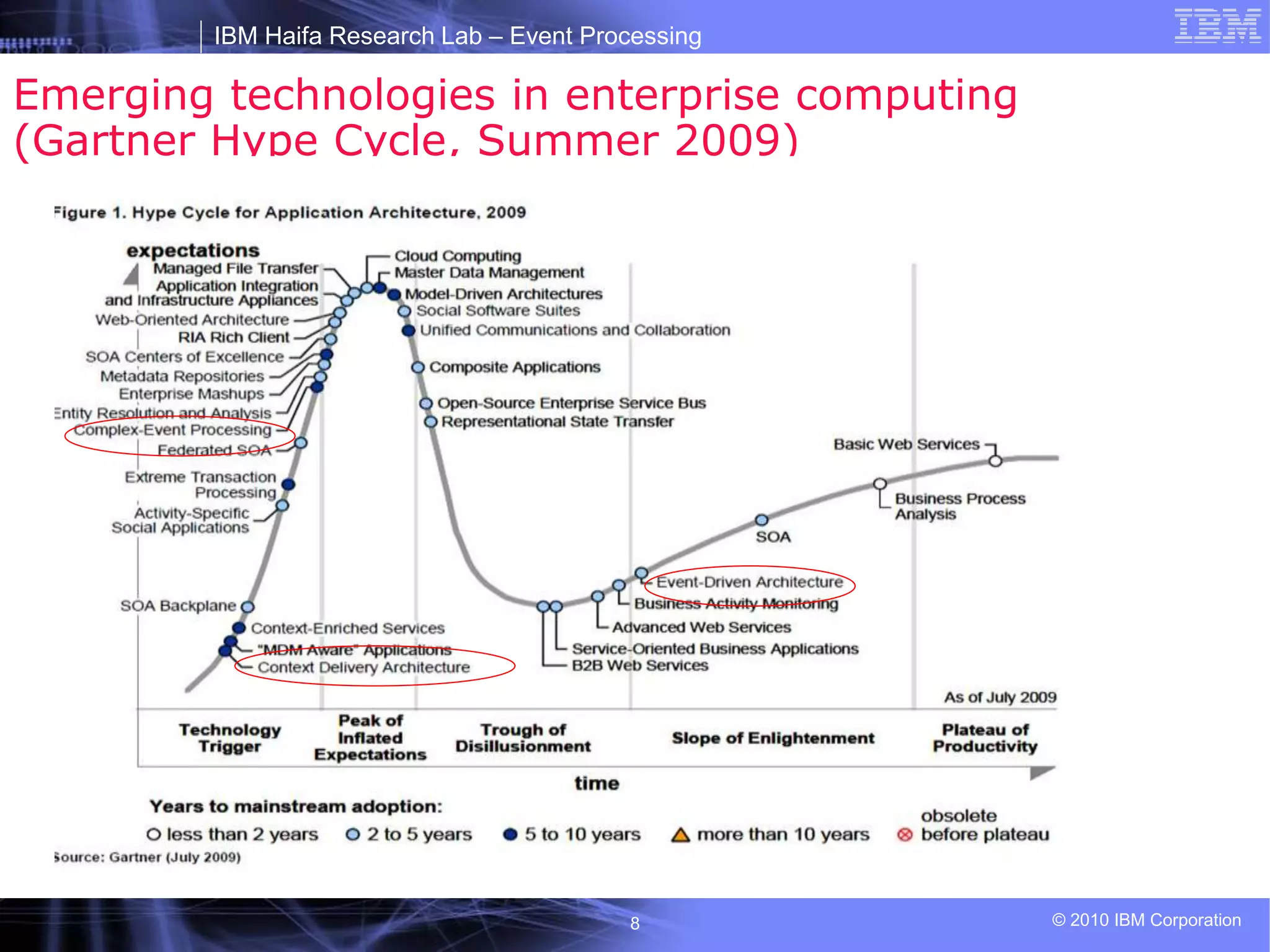
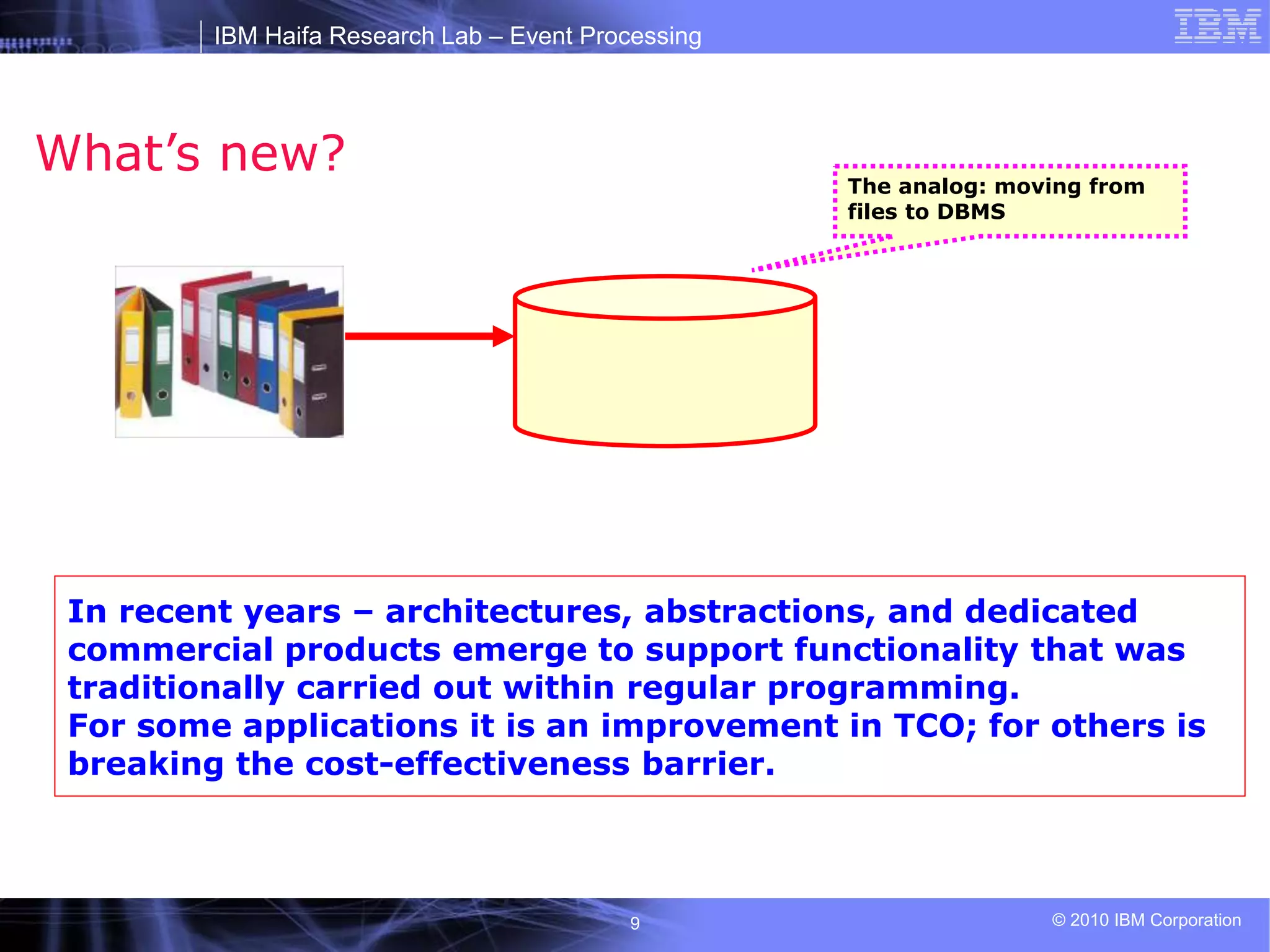
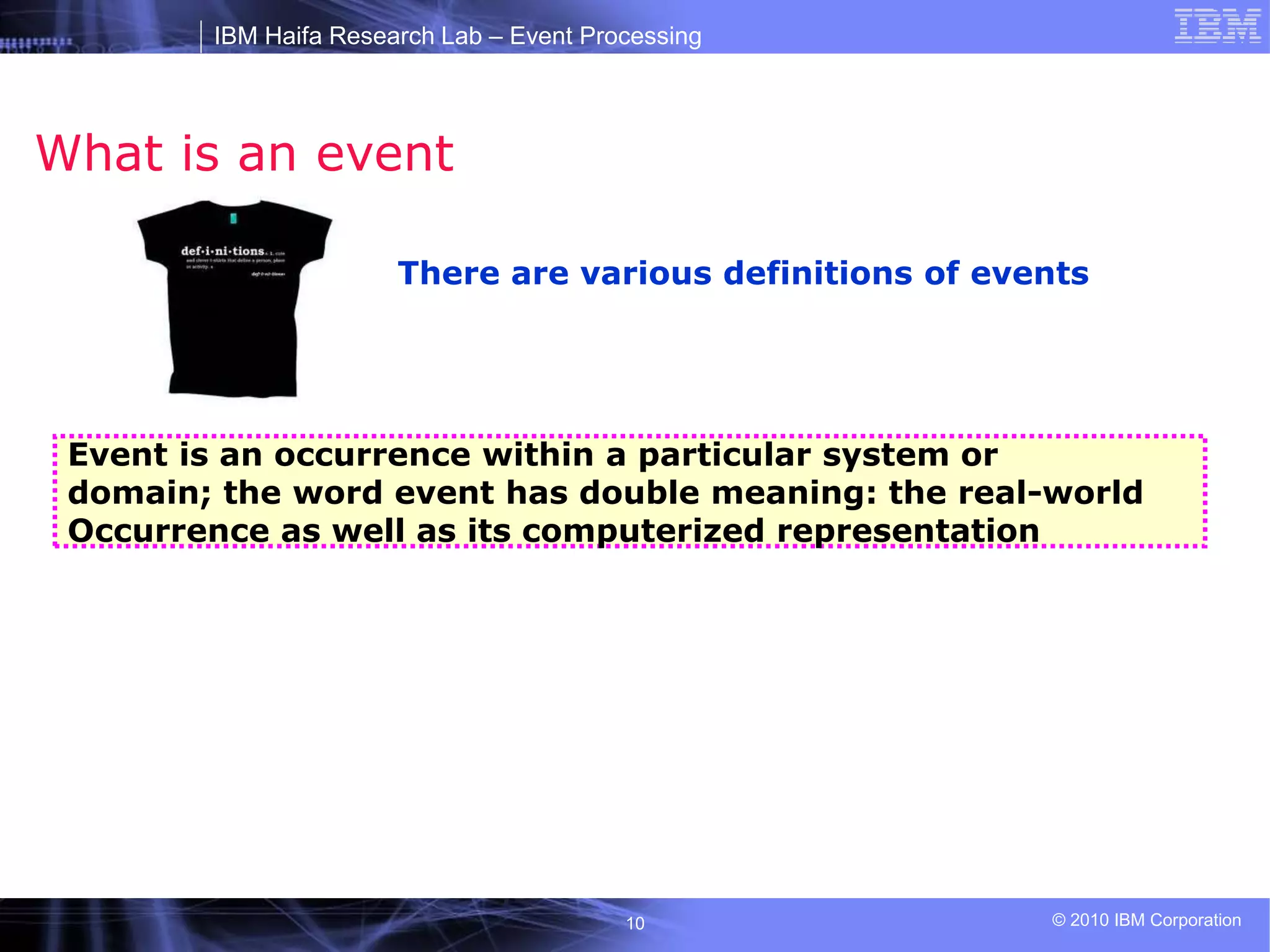
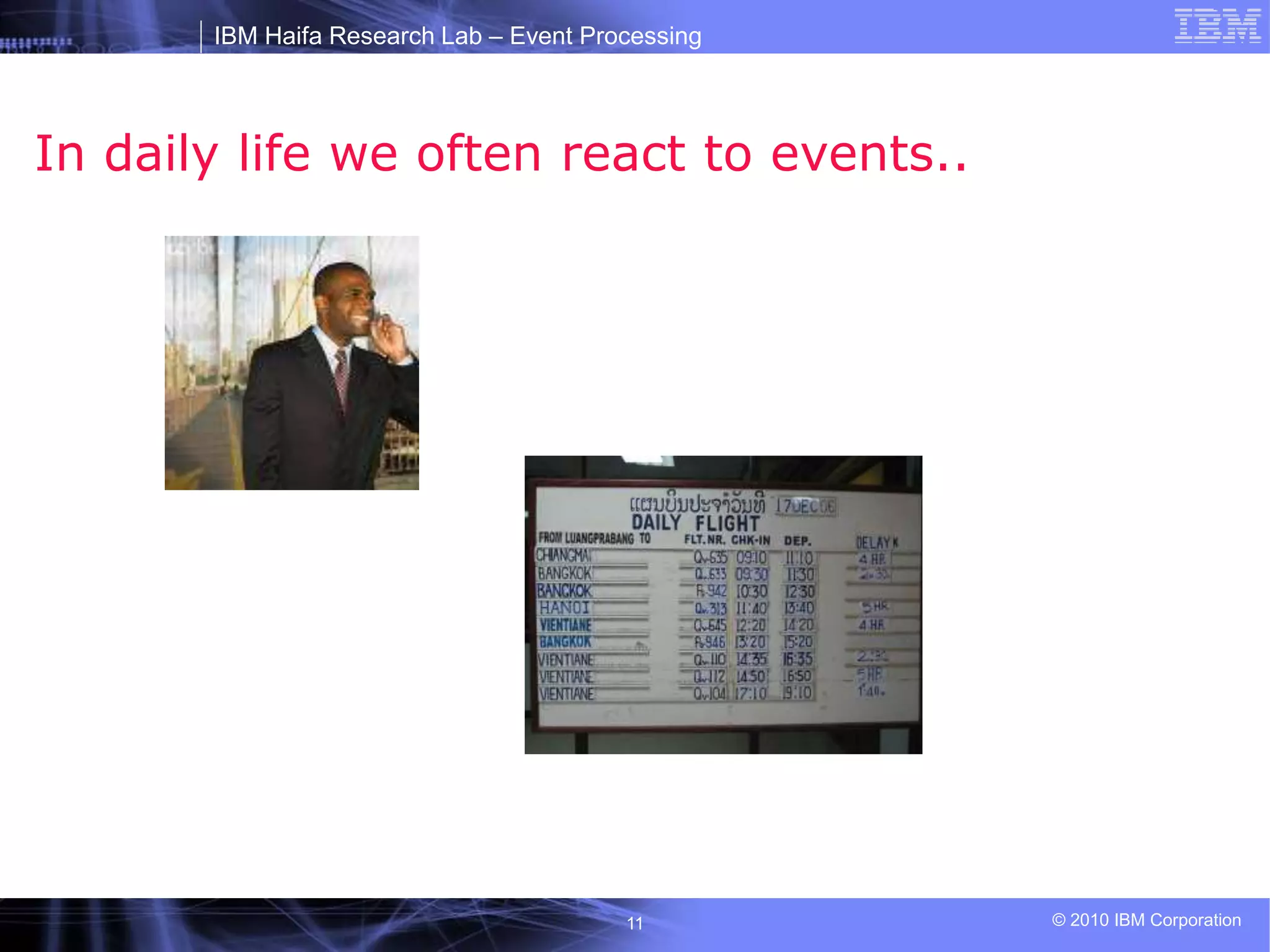
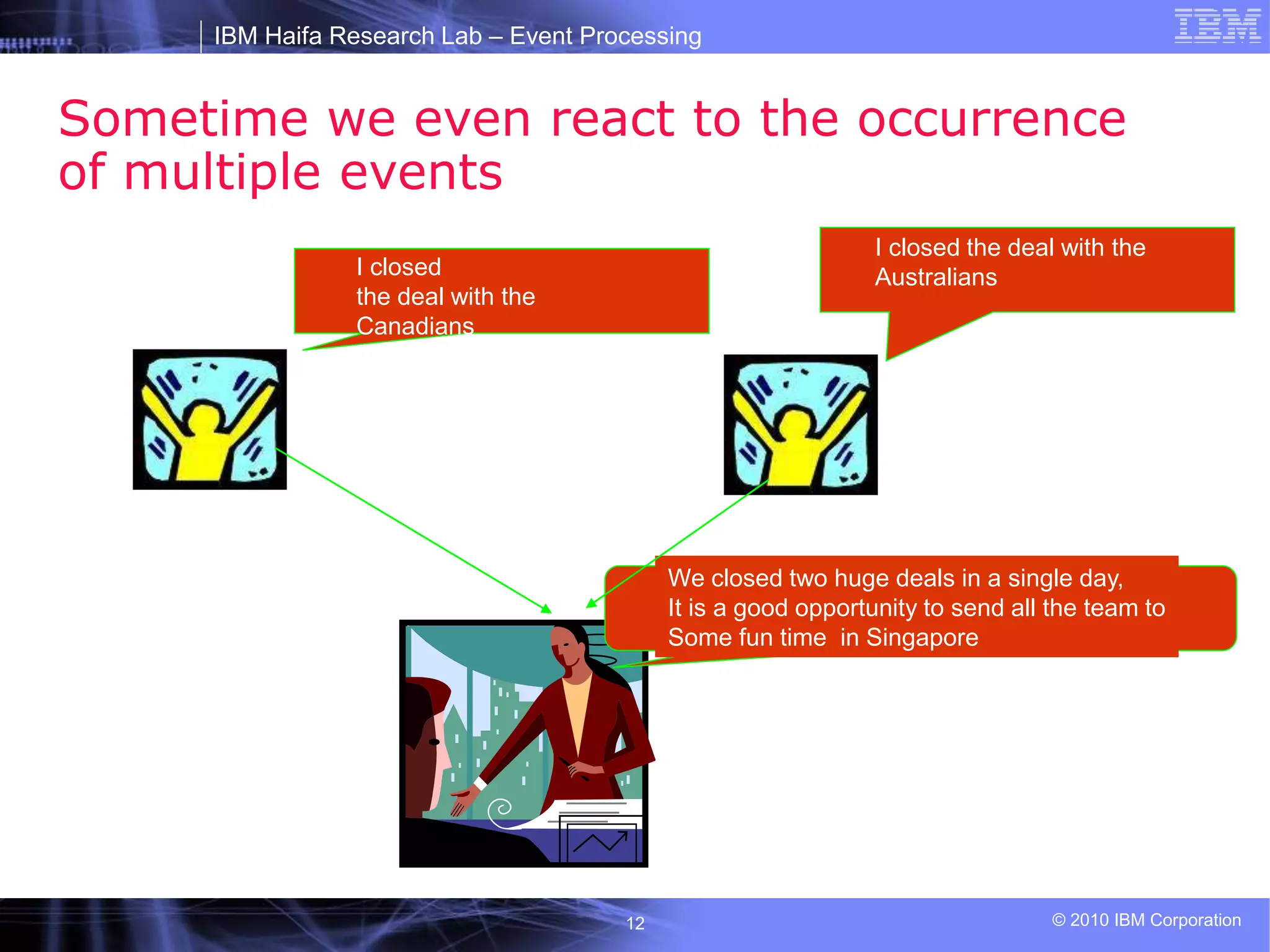
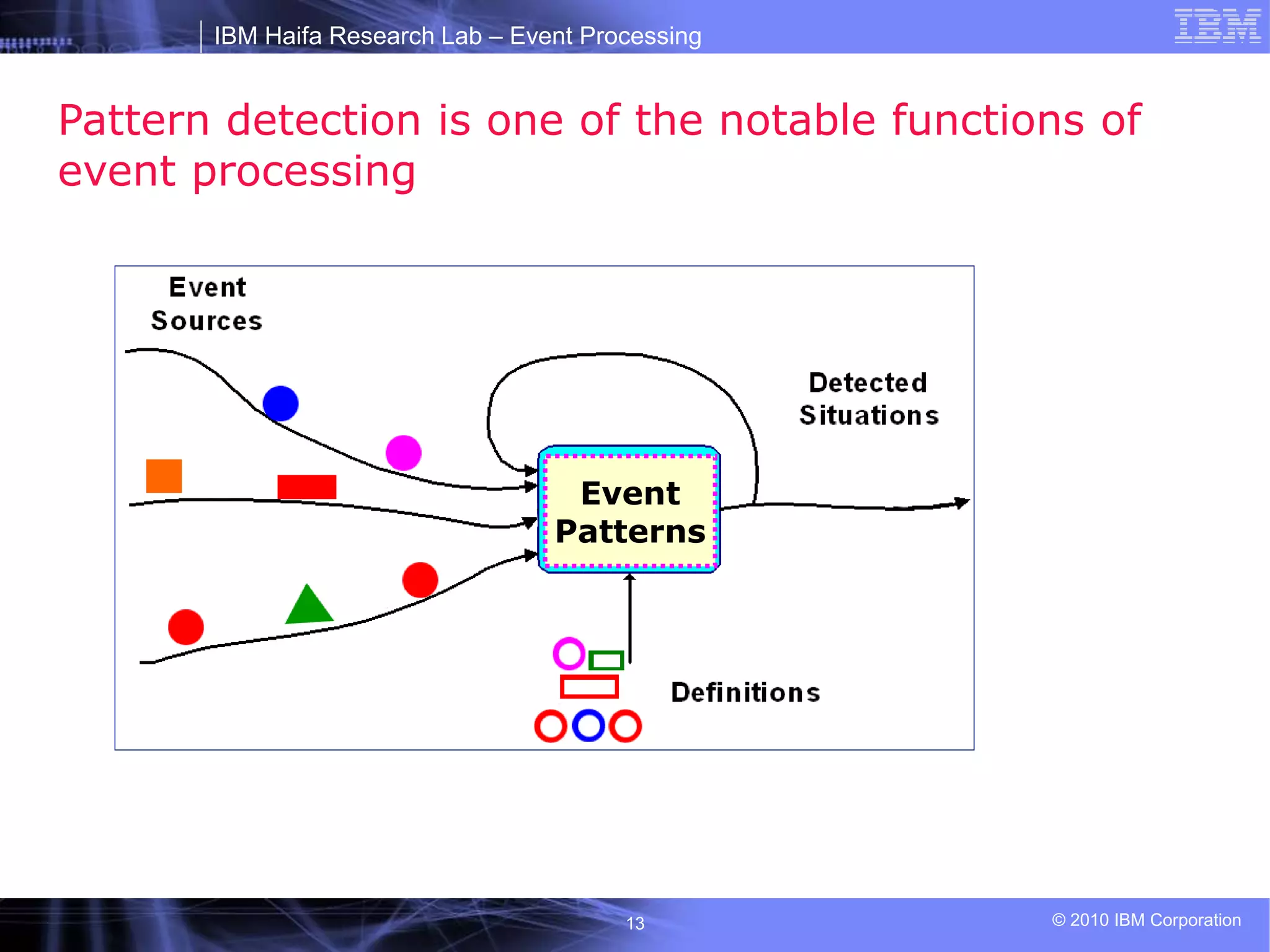
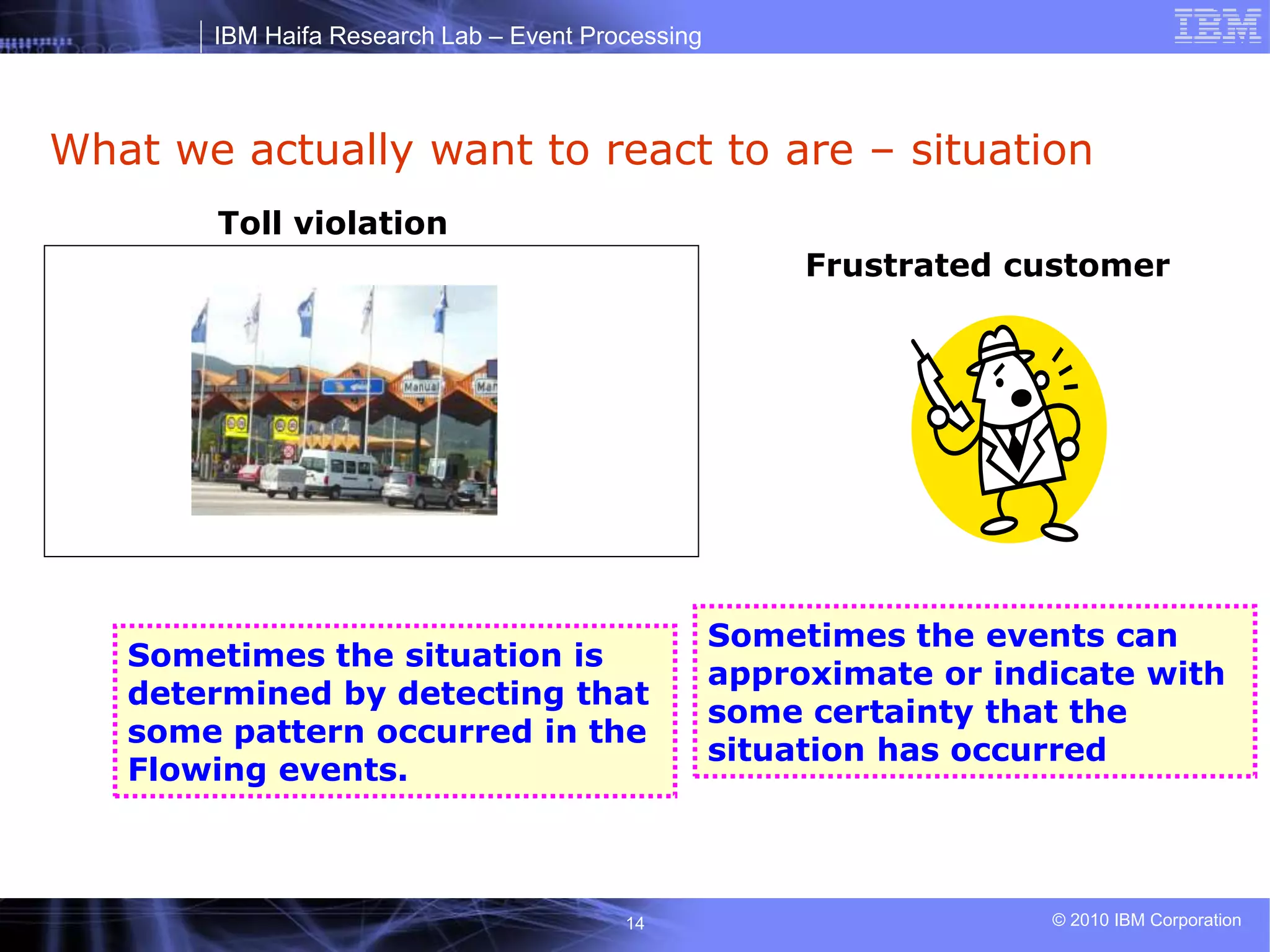
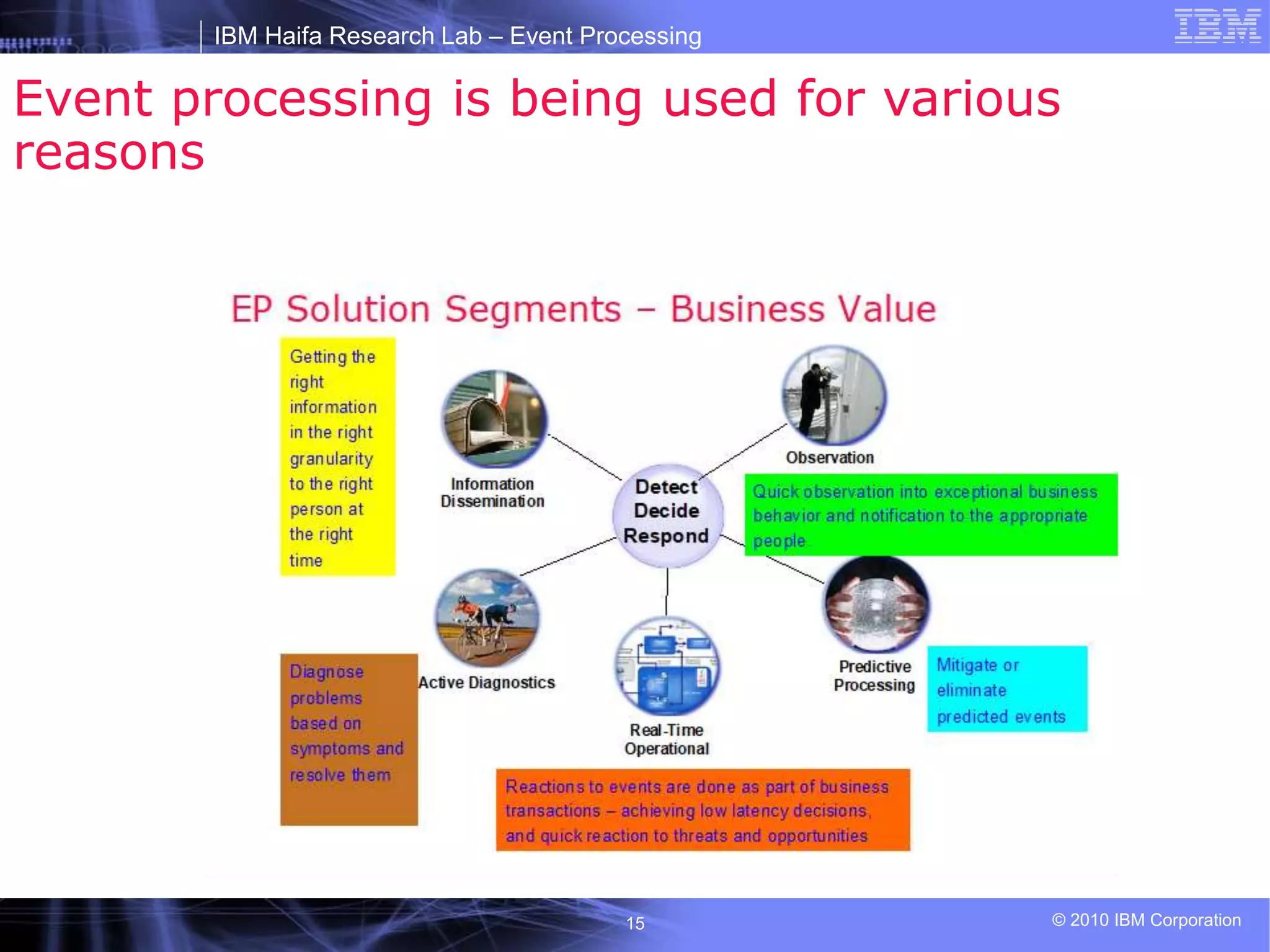
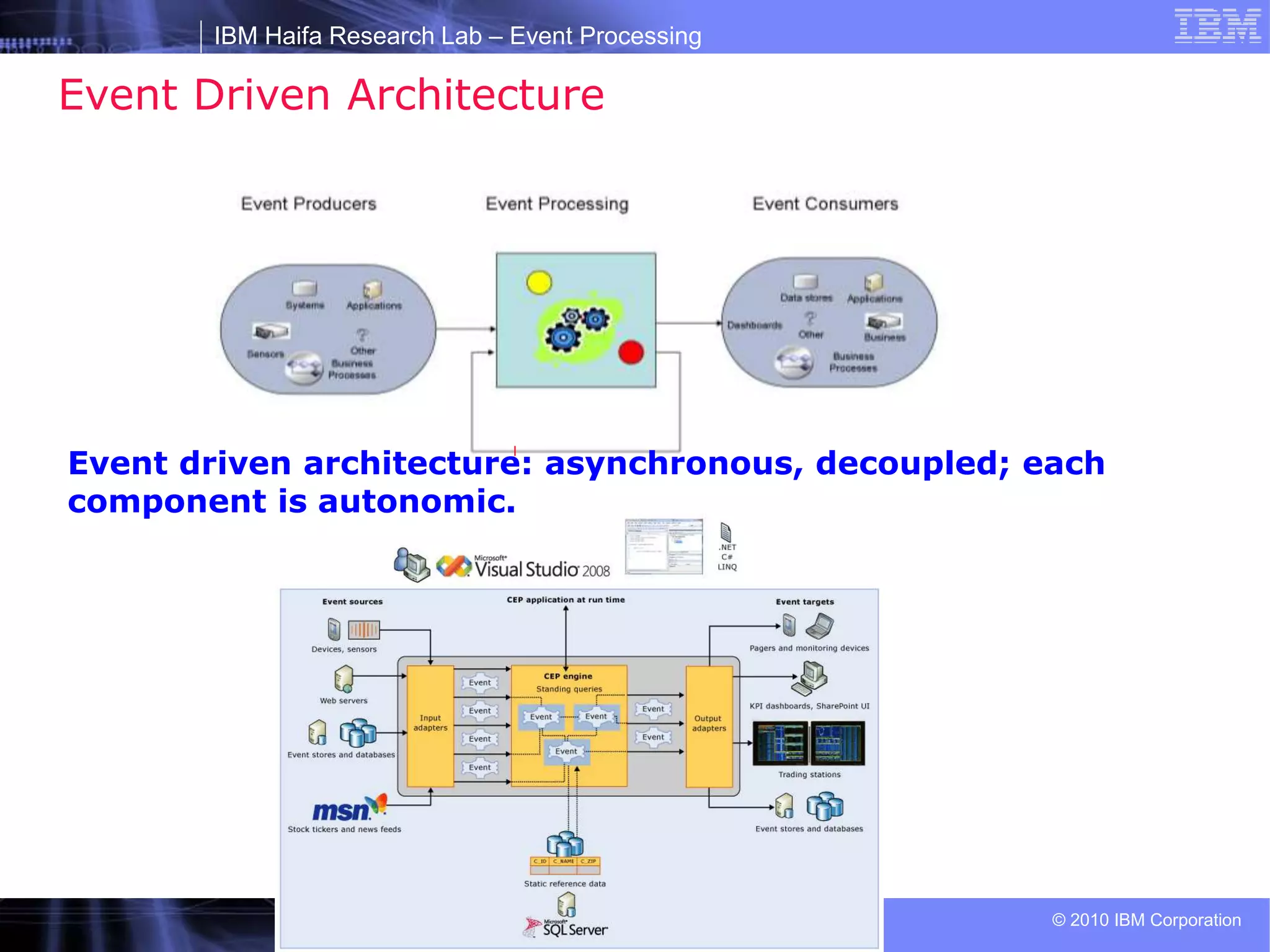
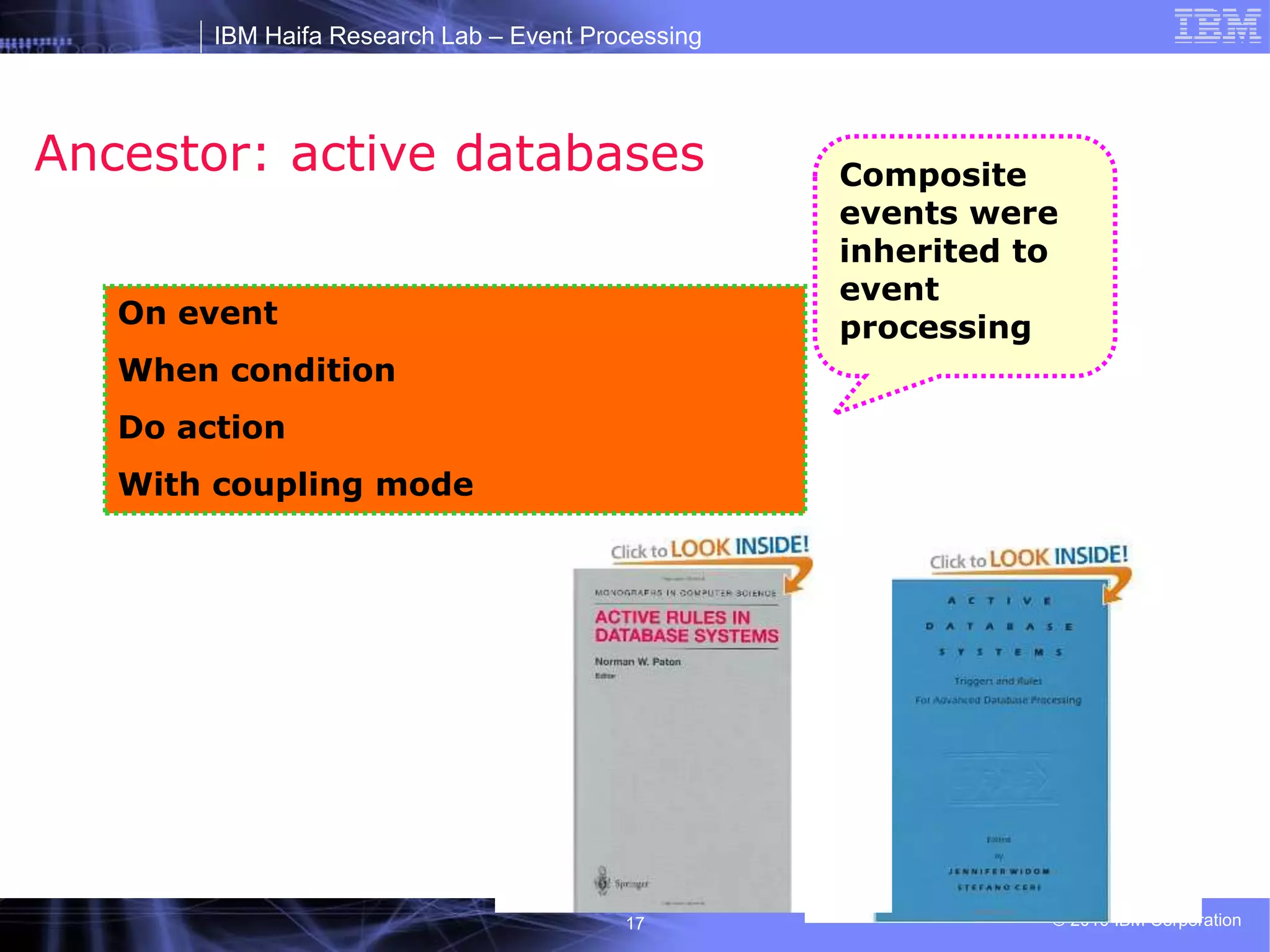


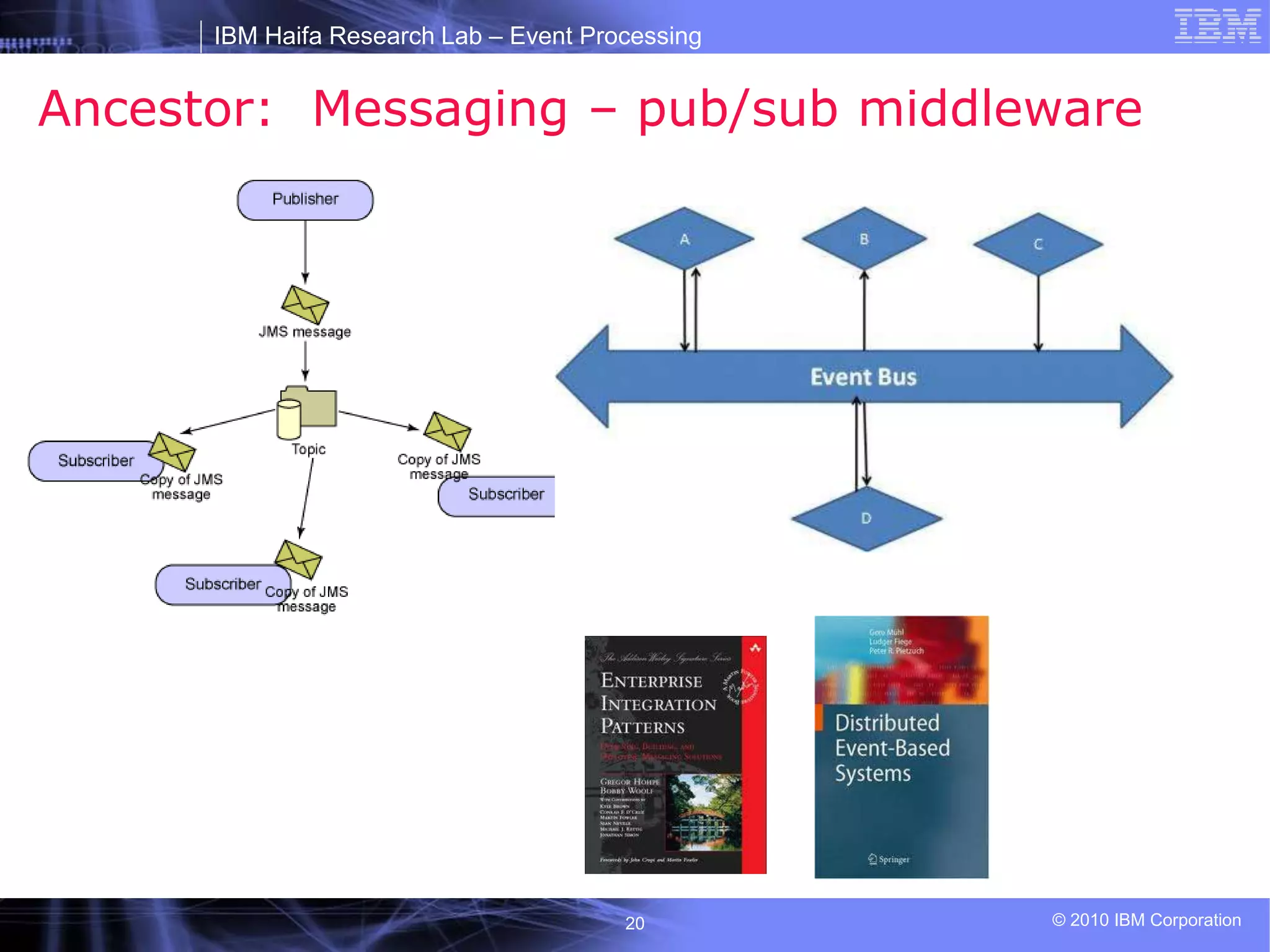

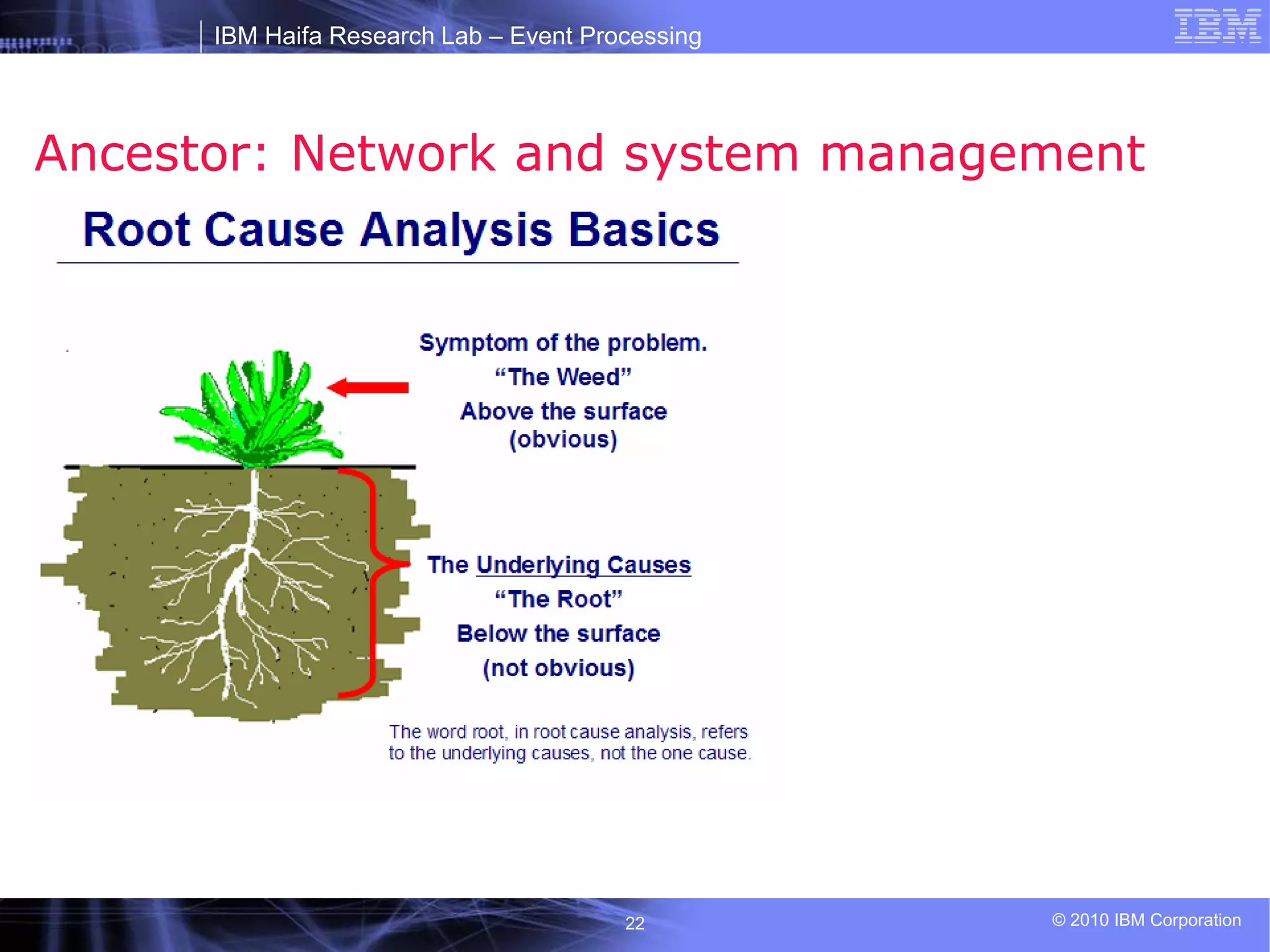
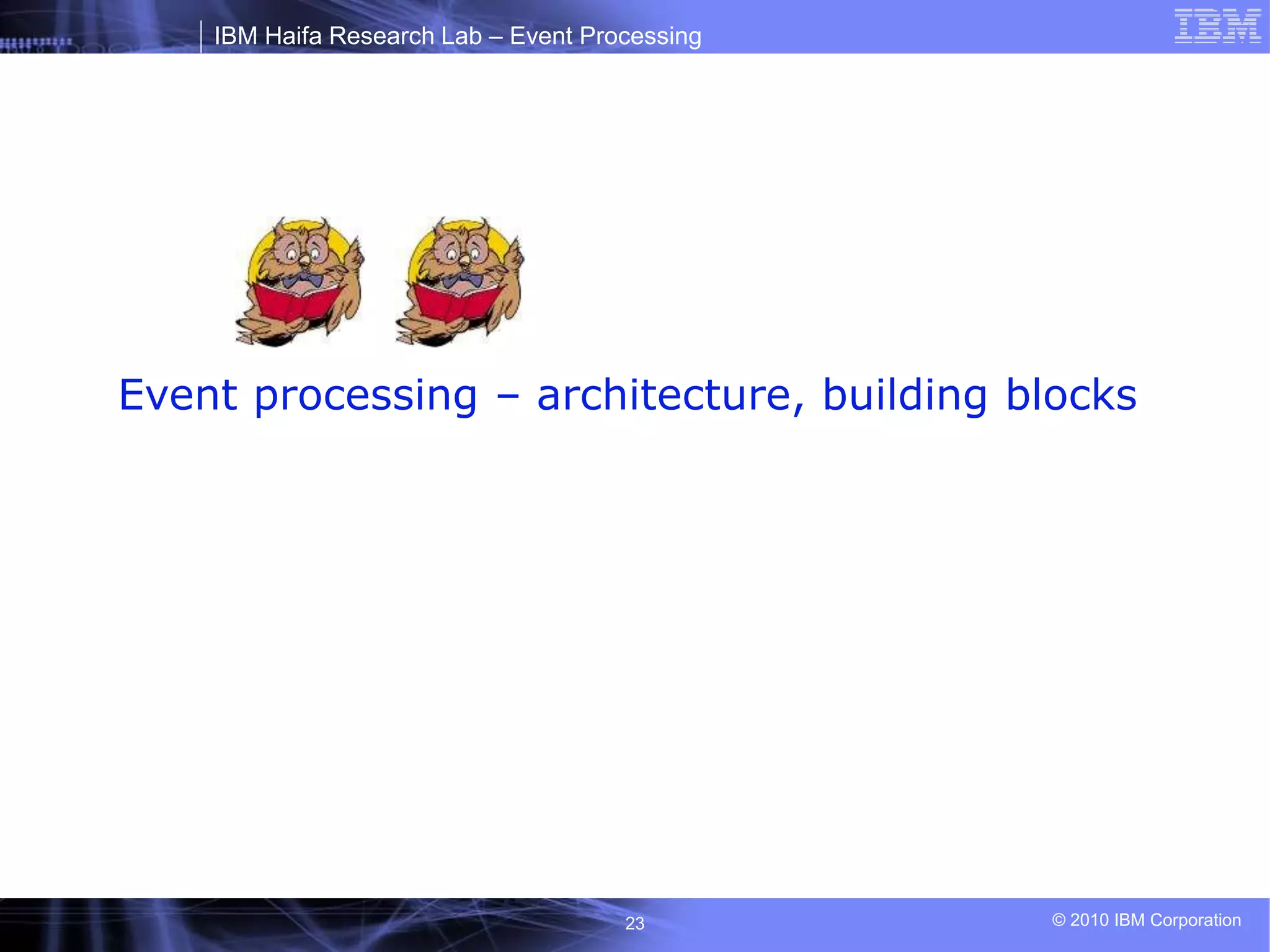


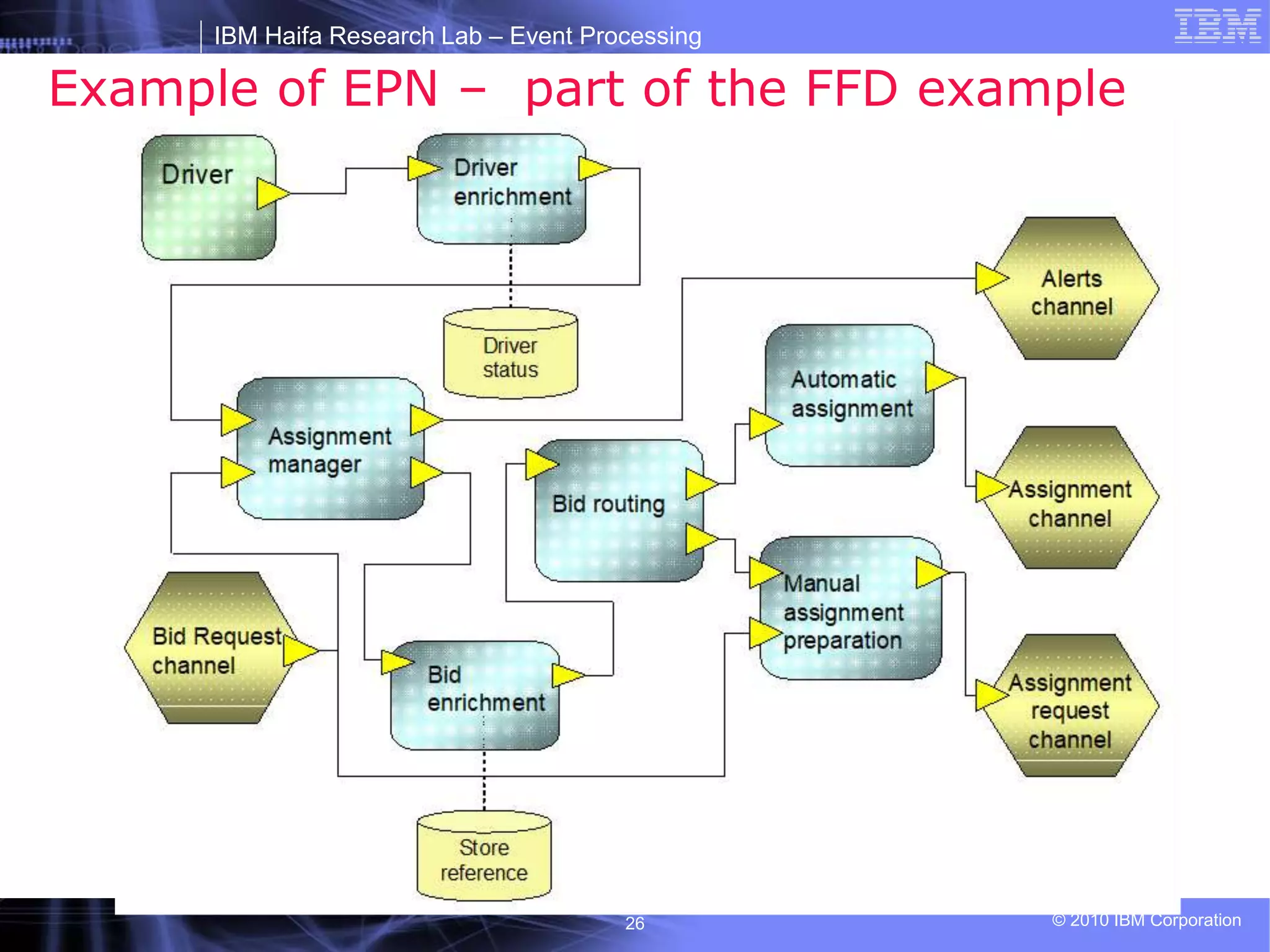
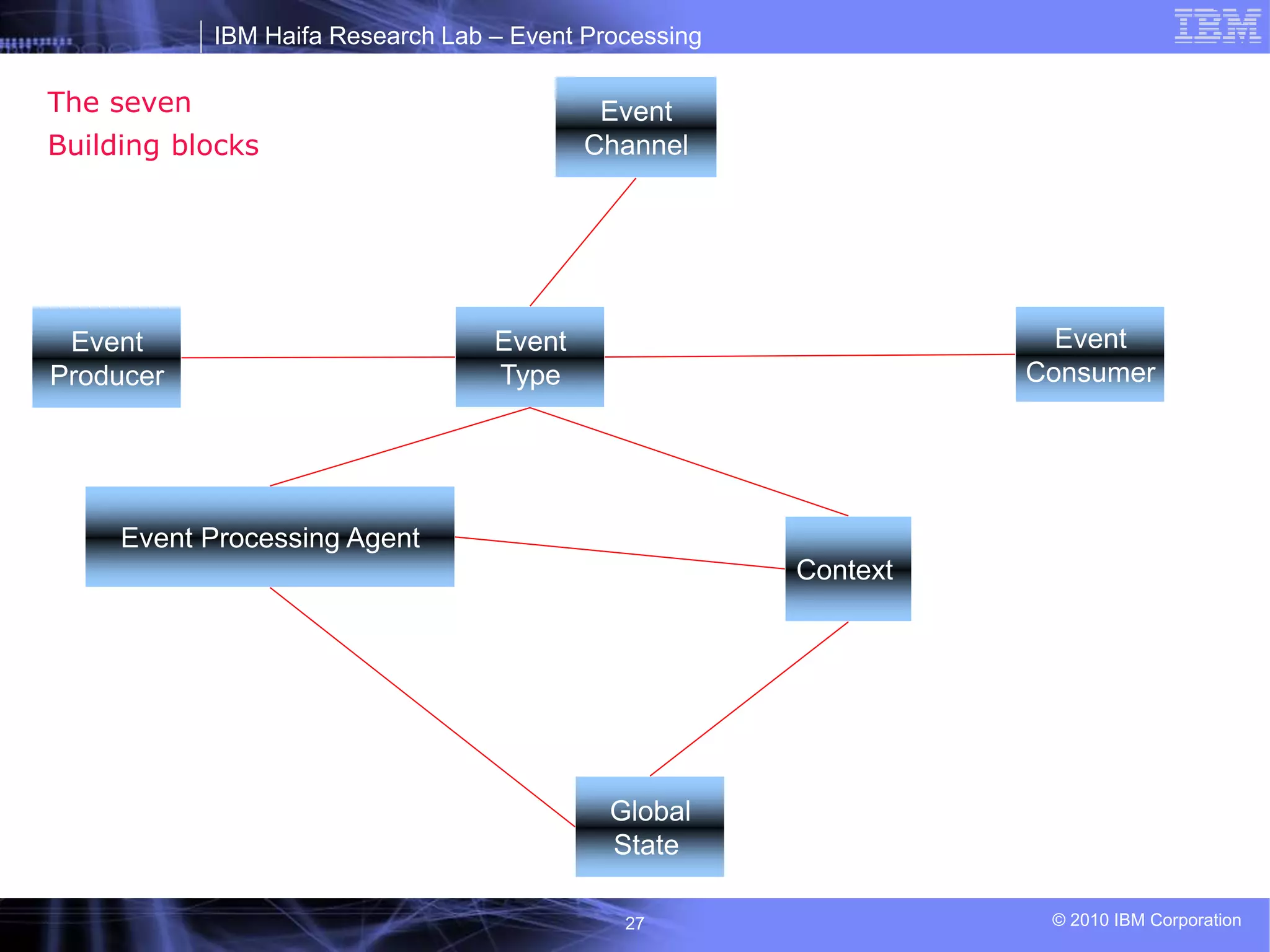




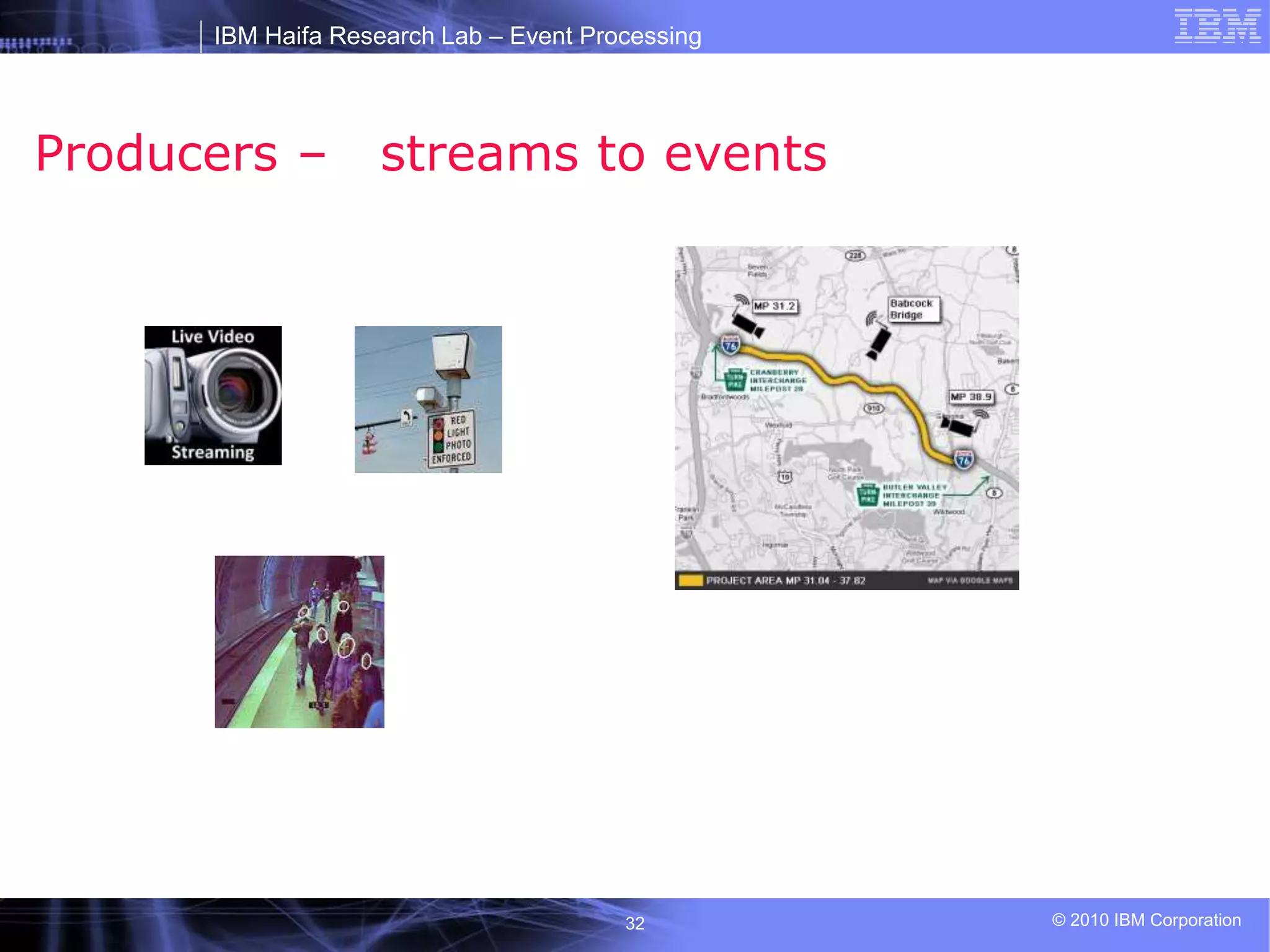
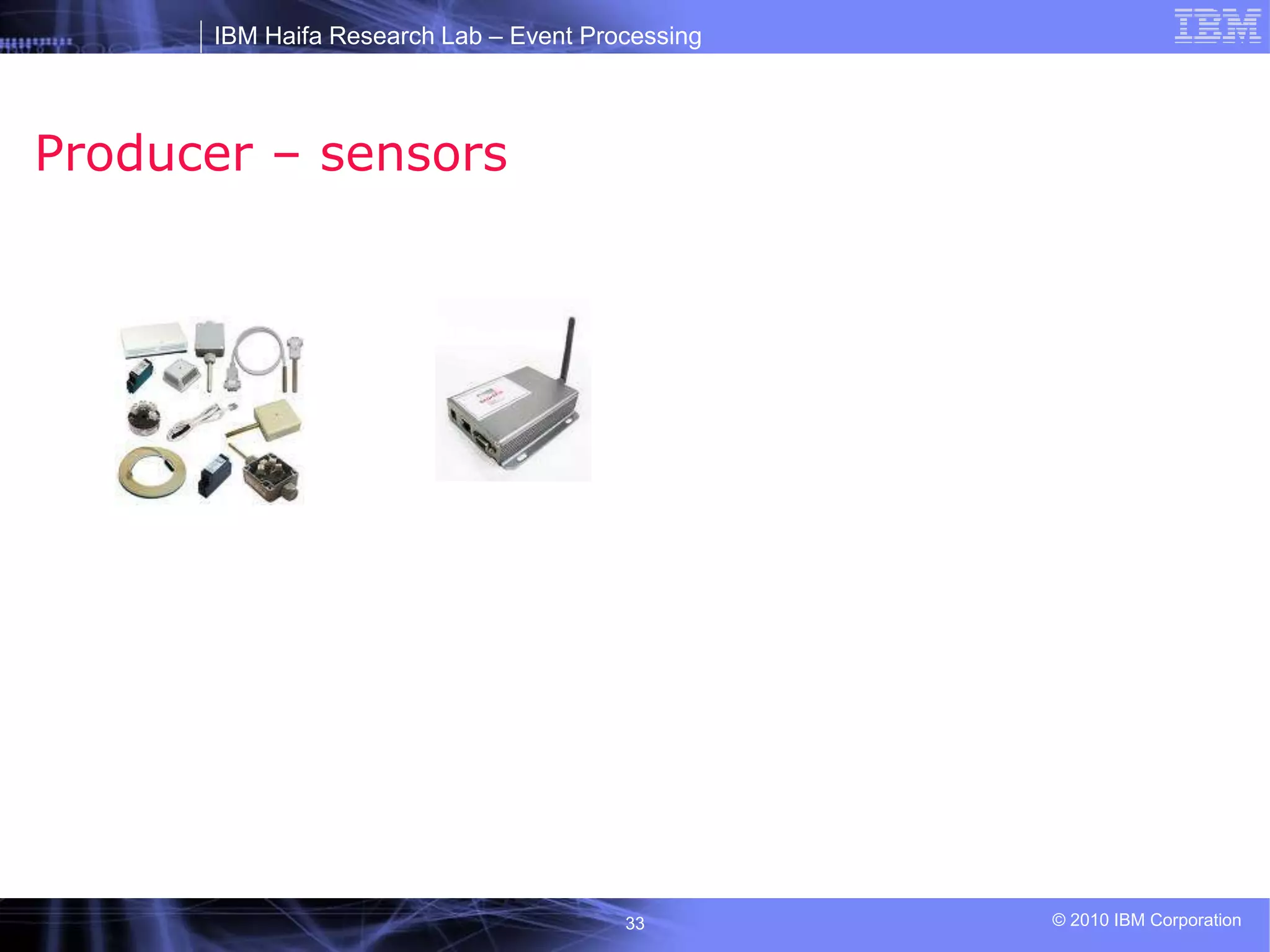


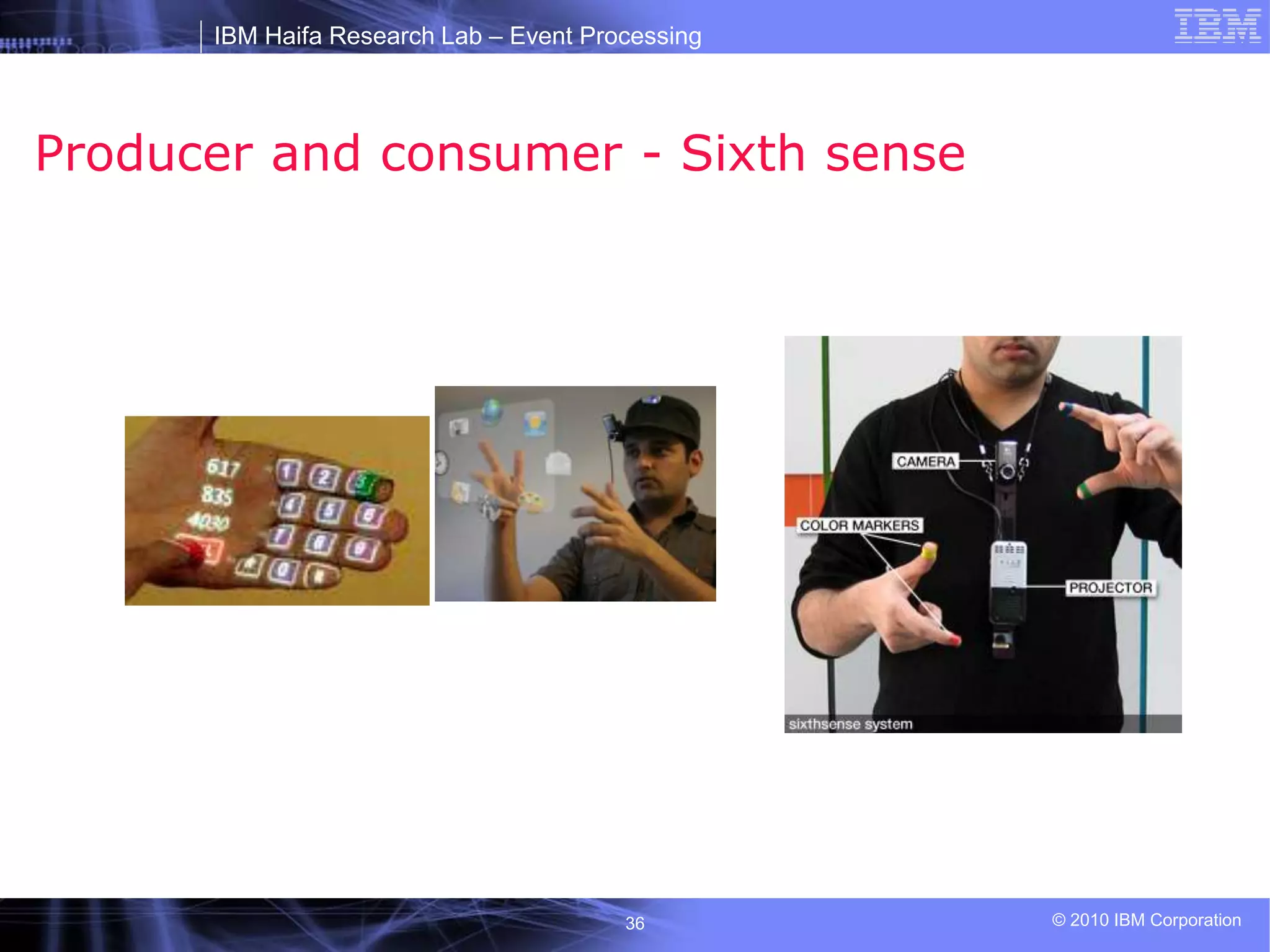

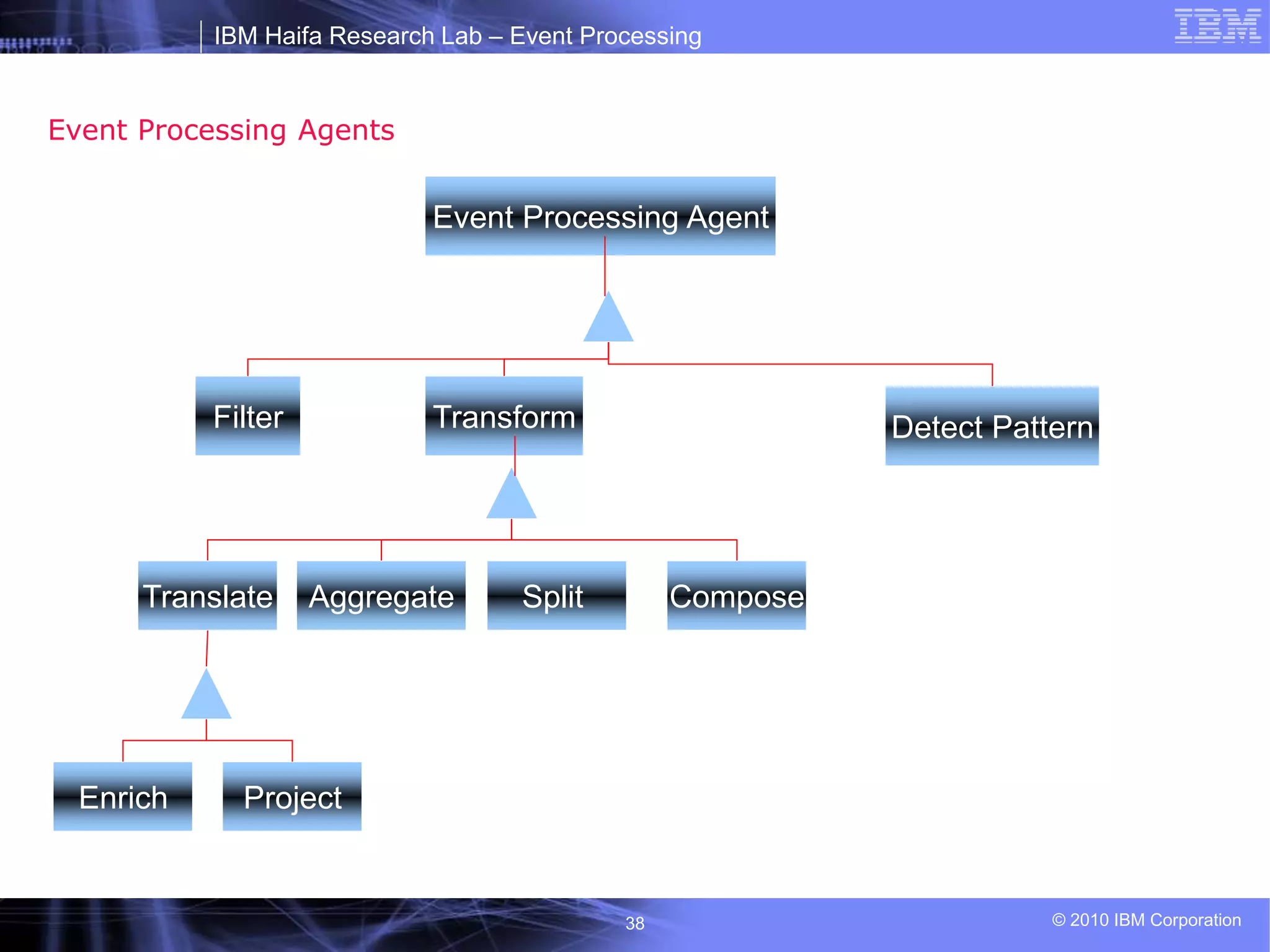


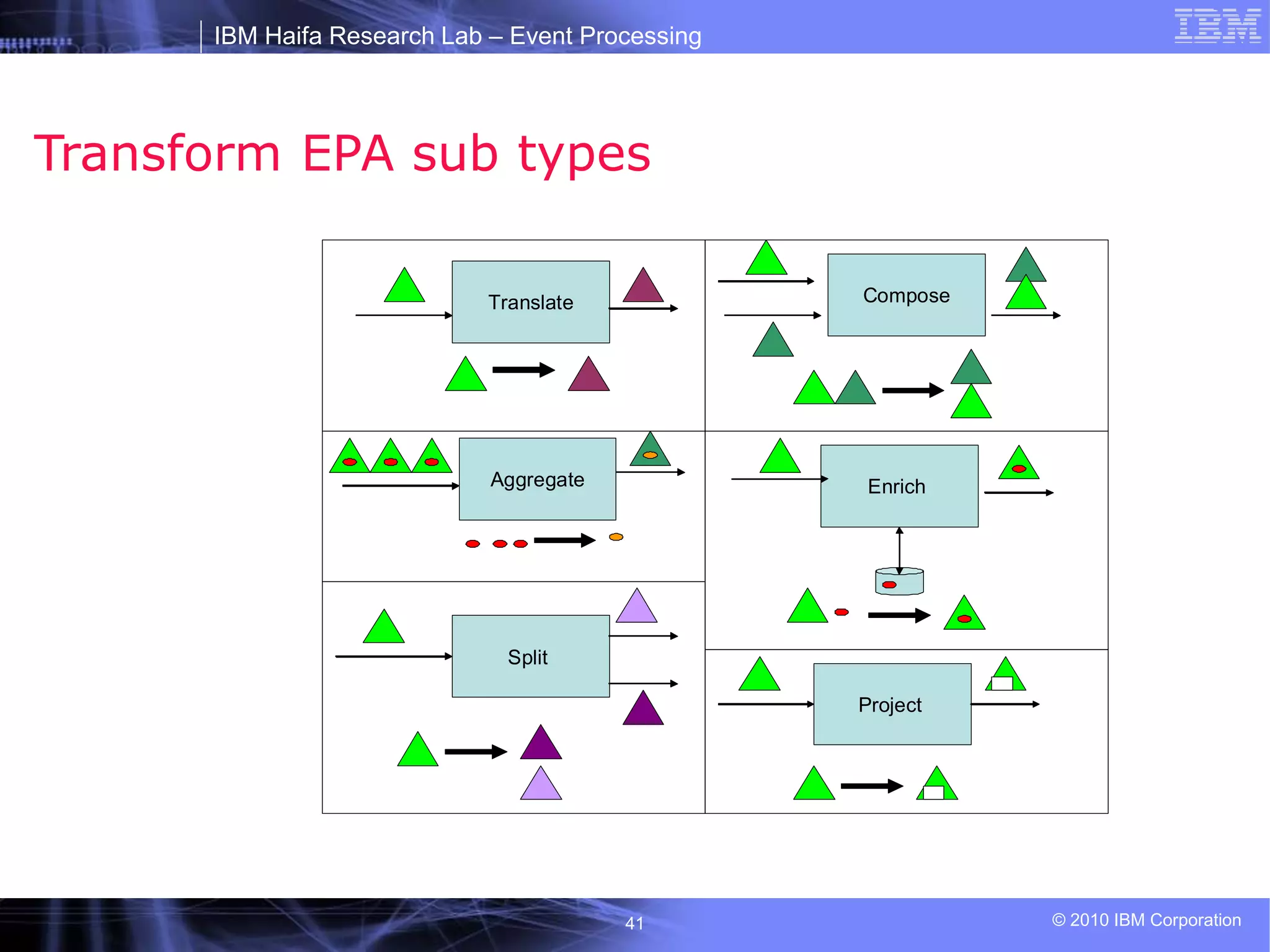
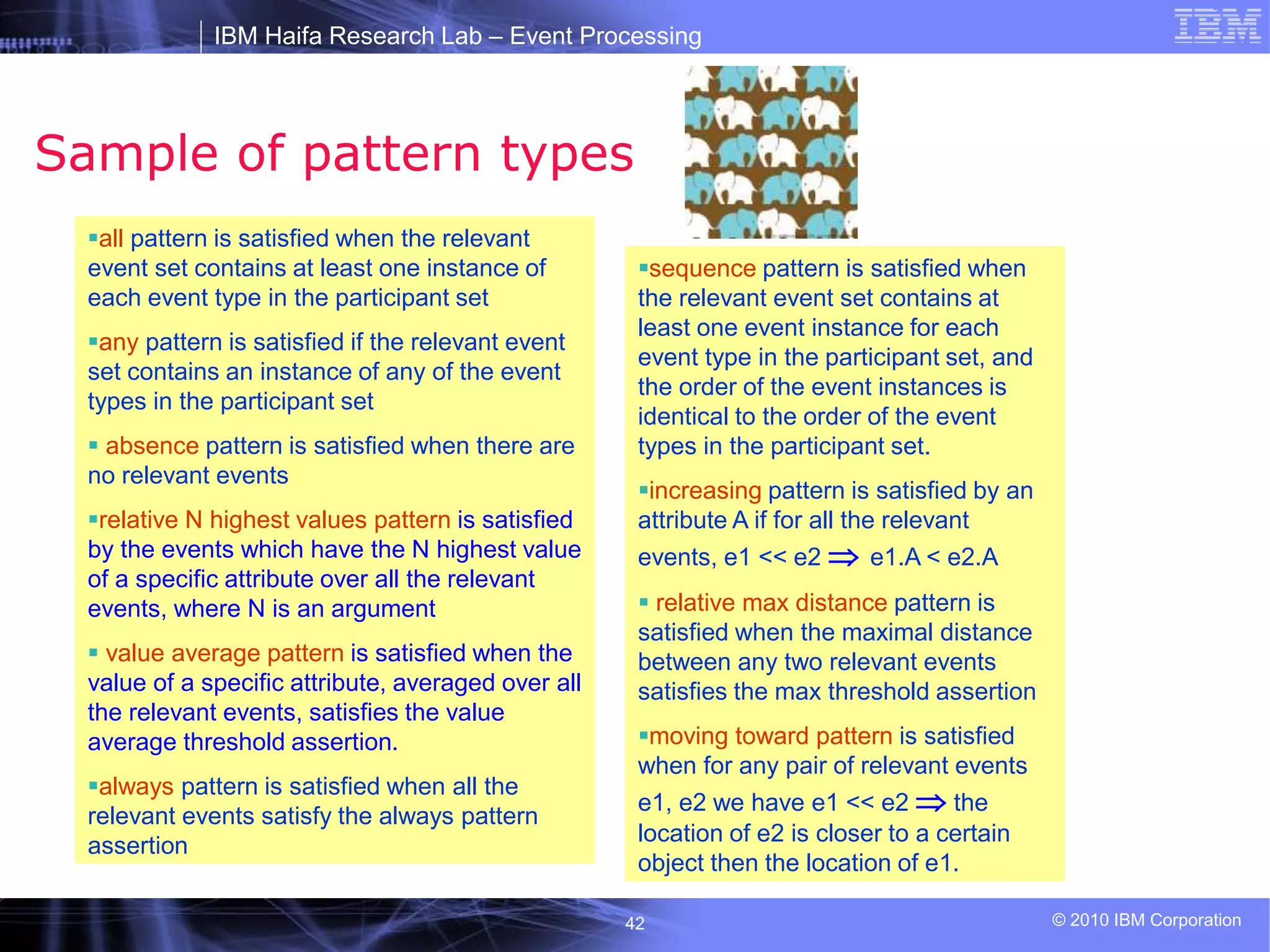

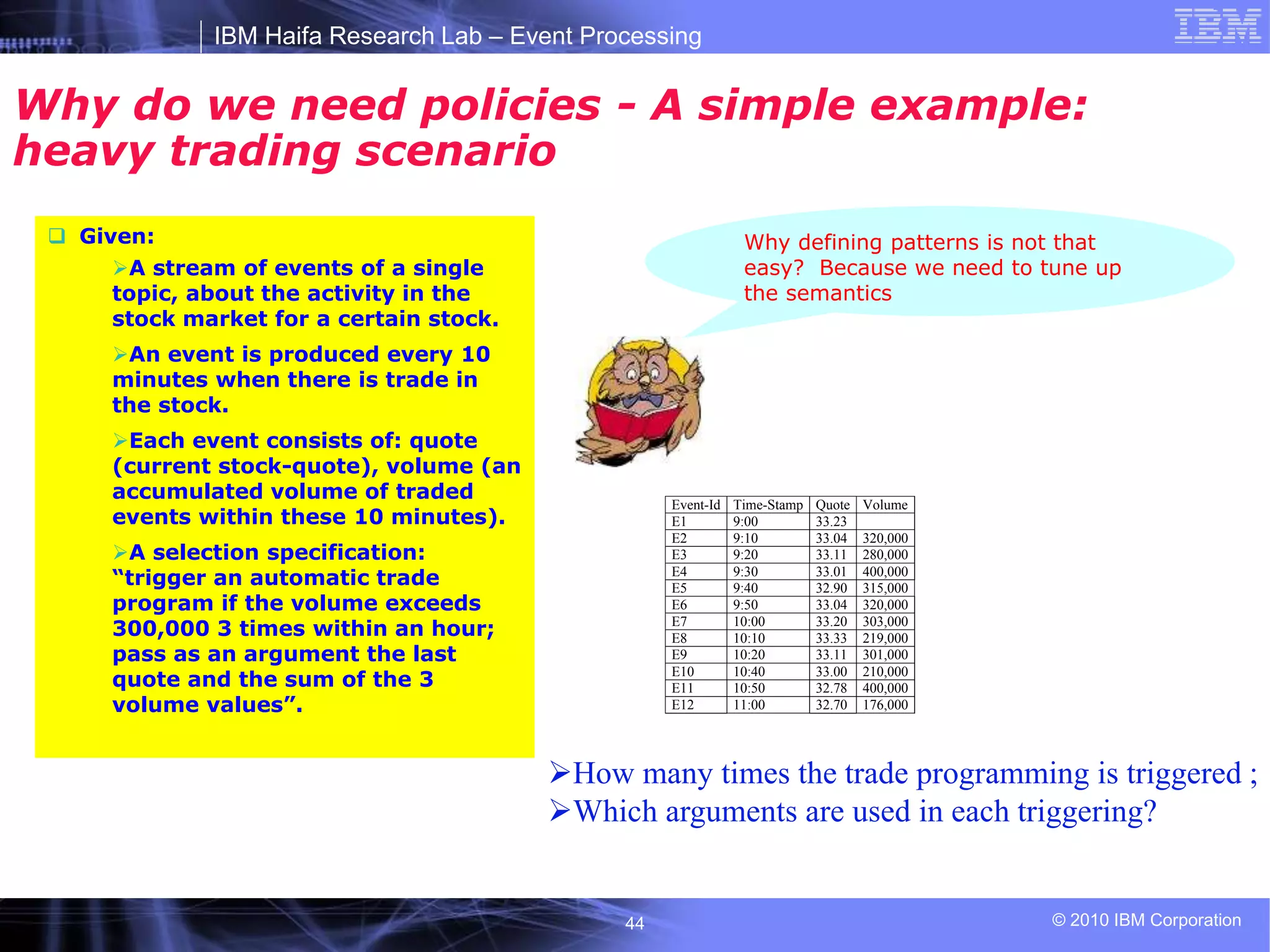
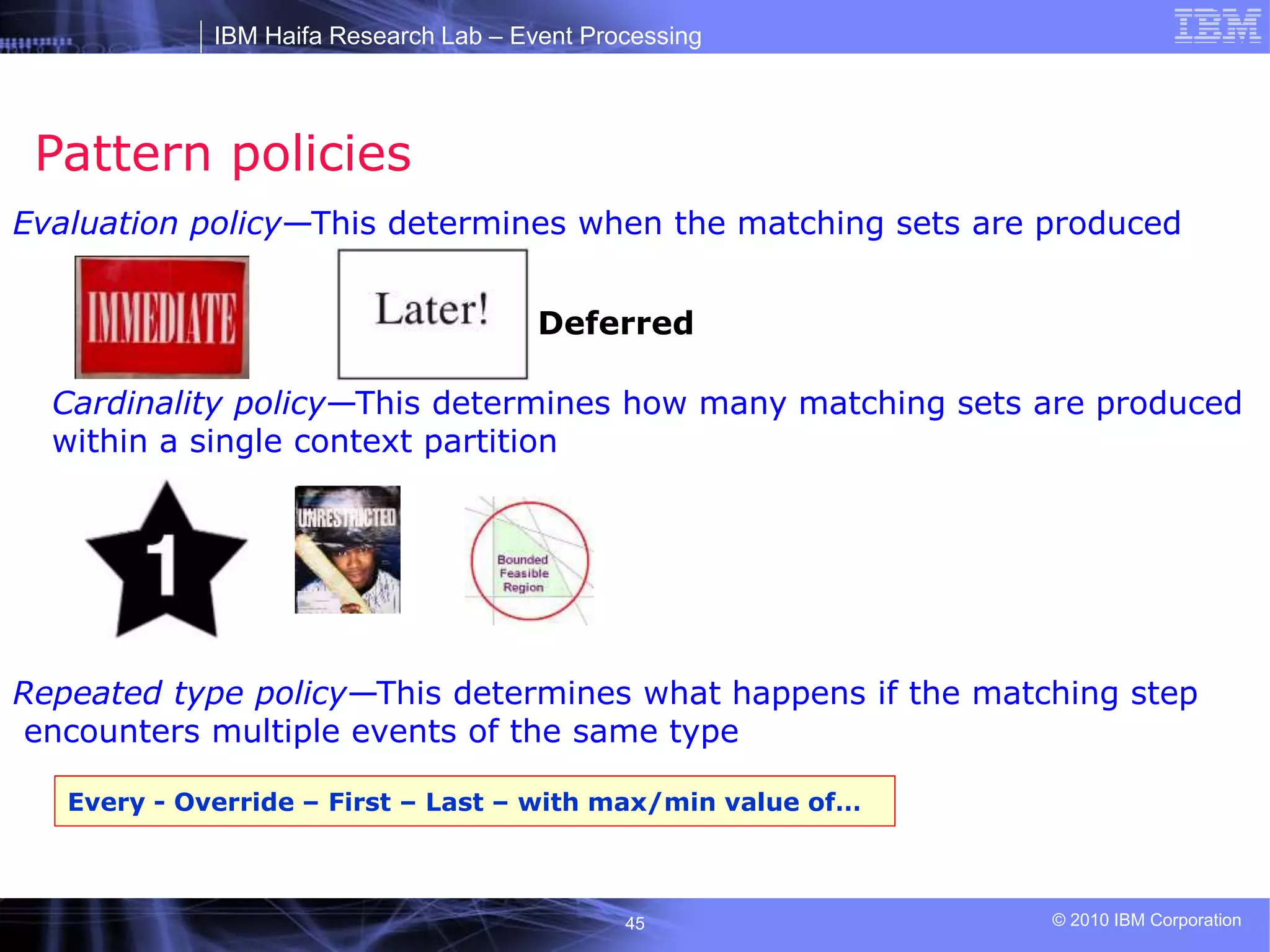





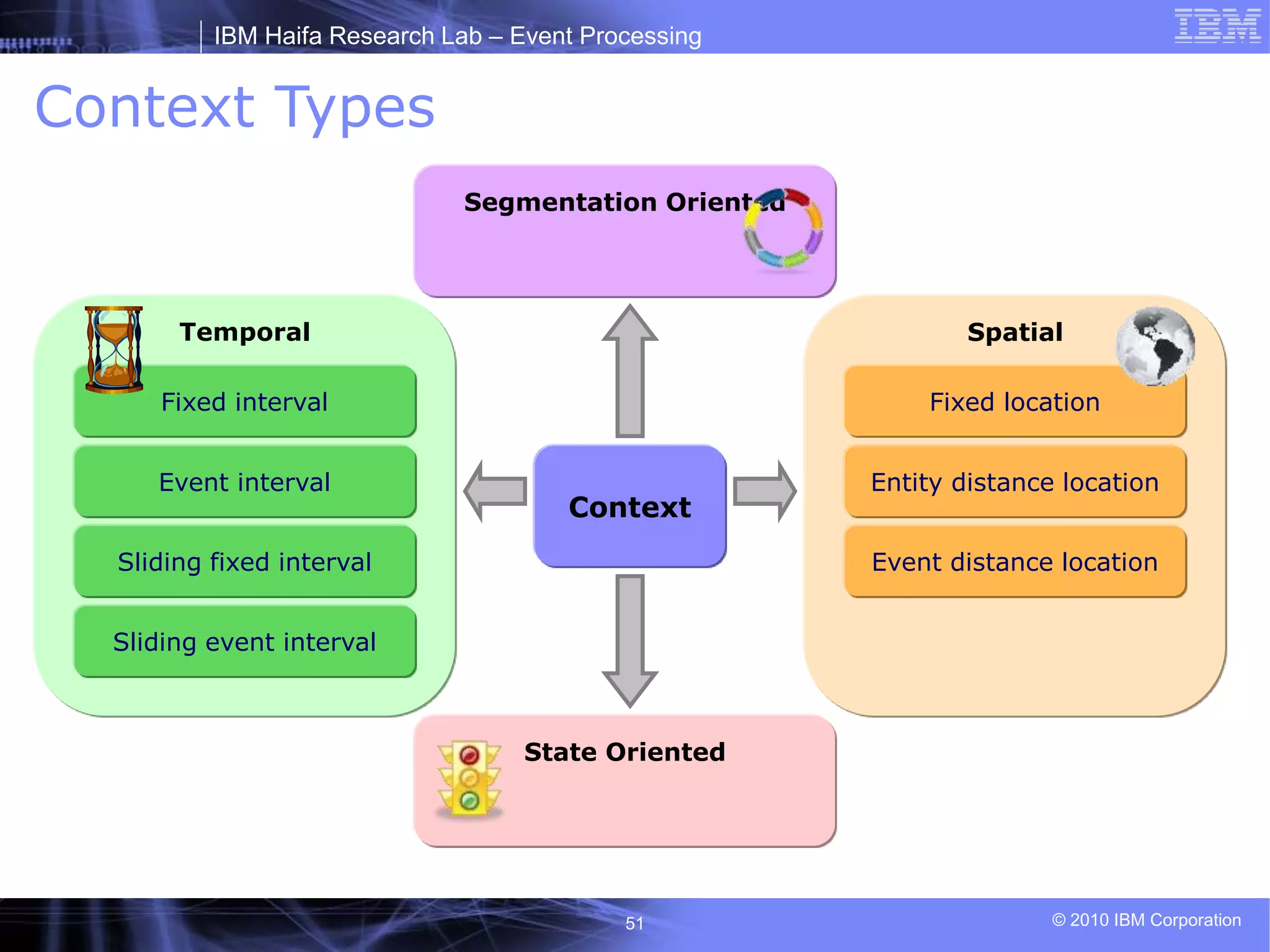

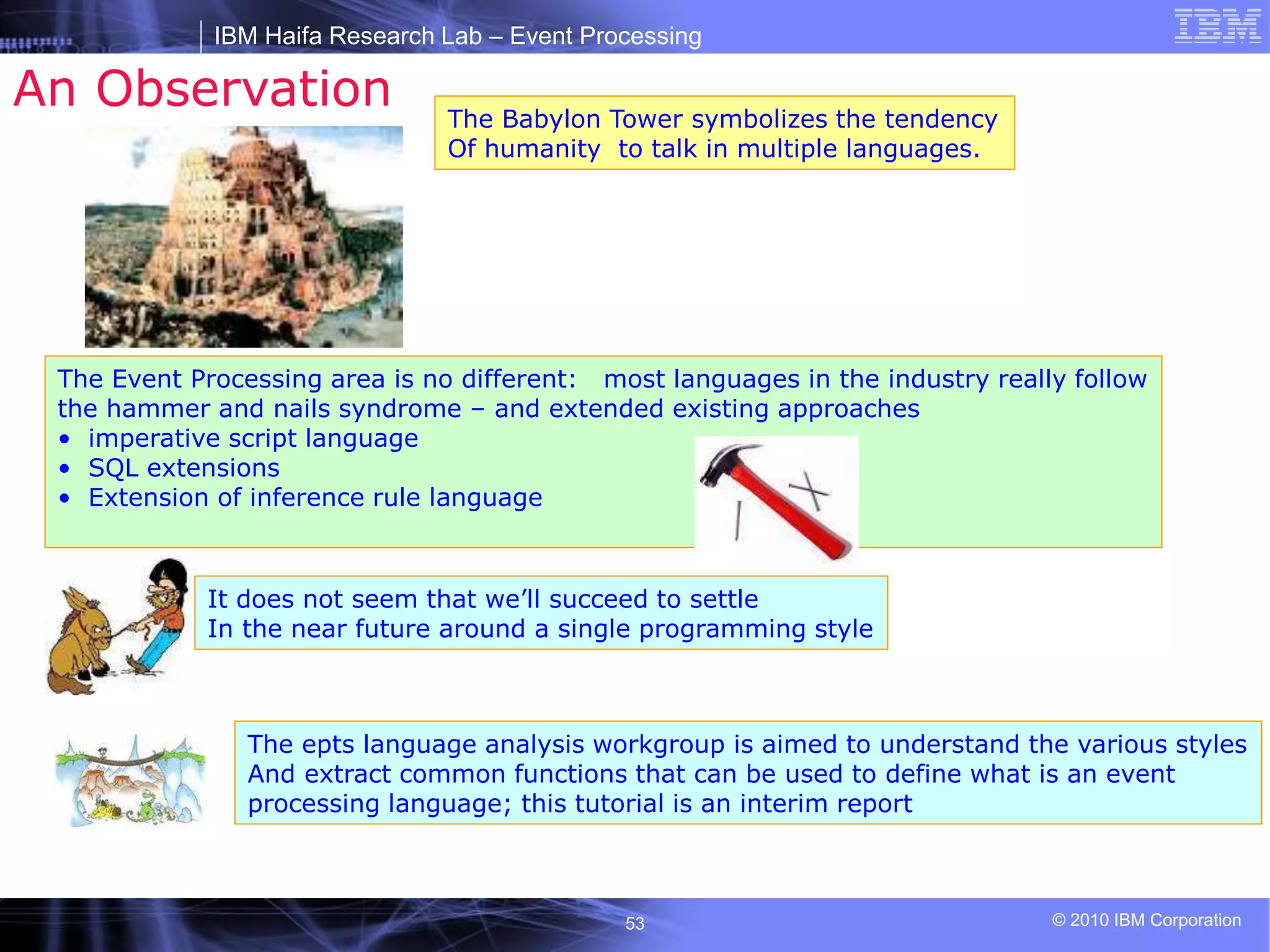
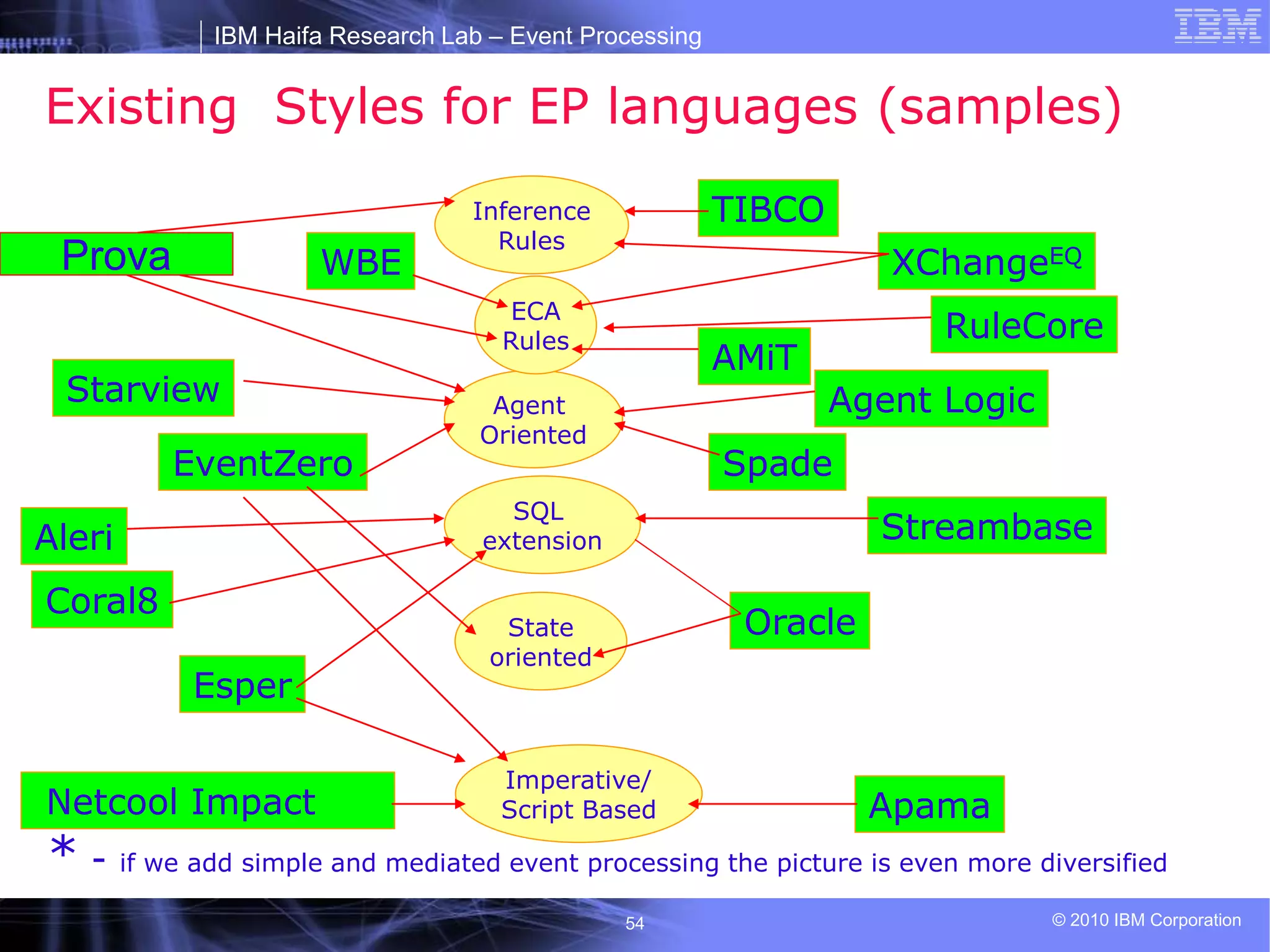


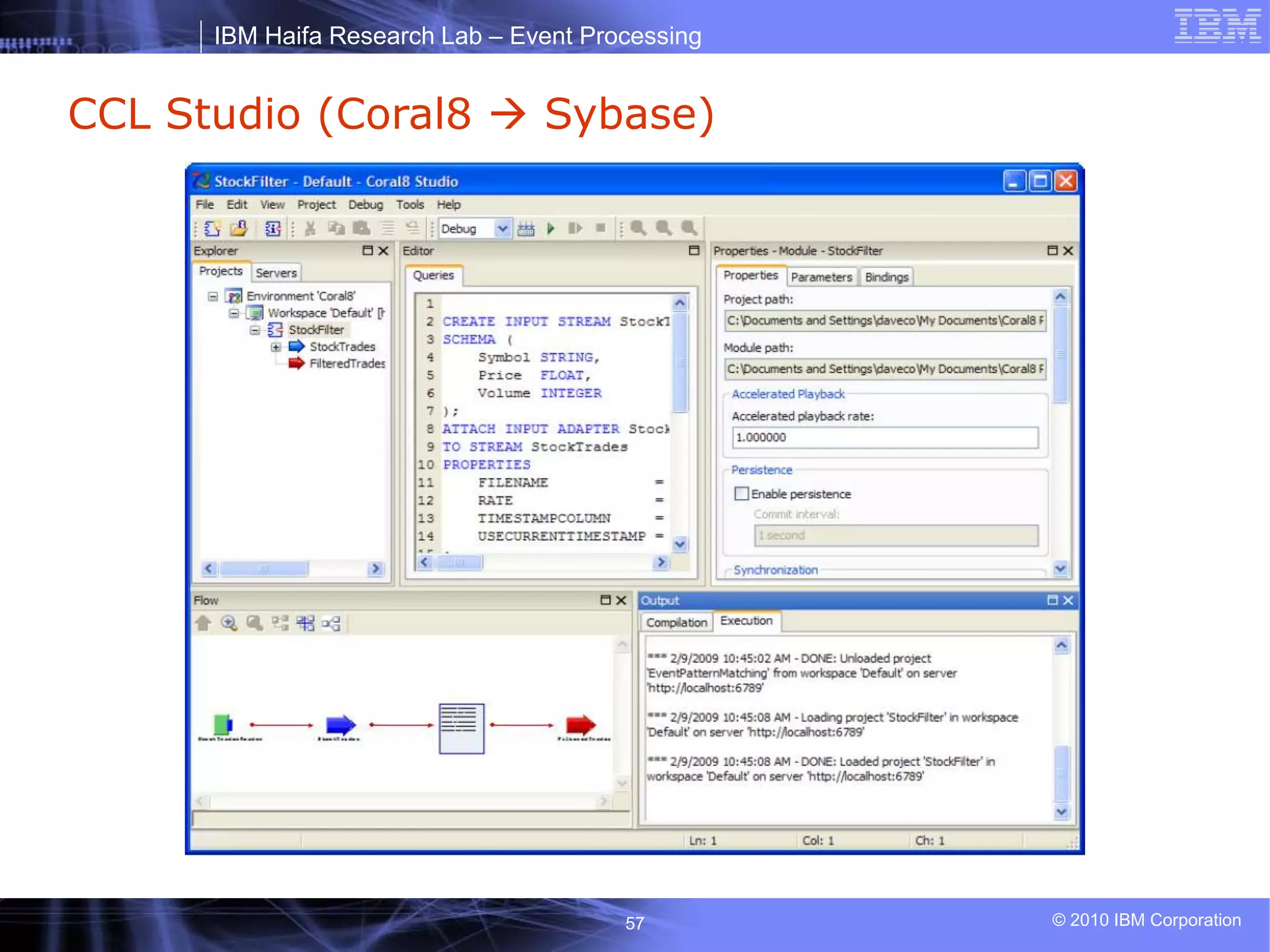
![IBM Haifa Research Lab – Event Processing
© 2010 IBM Corporation
58
CCL – Pattern Matching
RFID monitoring application
Checks if a tag has been seen by readers A and B, then
C, but not D, within a 10 second window.
Insert into StreamAlerts
Select StreamA.id
From StreamA a, StreamB b, StreamC c, StreamD d
Matching [10 seconds: a && b, c, !d]
On a.id = b.id = c.id = d.id](https://image.slidesharecdn.com/opheretzionwed-pm-230101094902-3a592a74/75/OpherEtzion-Wed-PM-ppt-58-2048.jpg)

![IBM Haifa Research Lab – Event Processing
© 2010 IBM Corporation
60
Esper EPL – FFD Example
/*
* Not delivered up after 10 mins (600 secs) of the request target
delivery time
*/
insert into AlertW(requestId, message, driver, timestamp)
select a.requestId, "not delivered", a.driver, current_timestamp()
from pattern[
every a=Assignment (timer:interval(600 +
(a.deliveryTime-current_timestamp)/1000) and
not DeliveryConfirmation(requestId = a.requestId) and
not NoOneToReceiveMSG(requestId = a.requestId))
];](https://image.slidesharecdn.com/opheretzionwed-pm-230101094902-3a592a74/75/OpherEtzion-Wed-PM-ppt-60-2048.jpg)
